Categories
- Argentina
- Chile
- Antarctica
- Easter Island
- Falklands (Malvinas)
- Bolivia
- Peru
- Uruguay
- Paraguay
- Brazil
- Venezuela
- Colombia
- Ecuador
- Galapagos
- Panama
- Costa Rica
- Cuba
- Nicaragua
- Honduras
- El Salvador
- Guatemala
- Belize
- Mexico
- Latin American Xmas
Pages
- Map of South America
- Home Page
- First week in Latin America – October 2009
- Map of Central America
- Contact Us
- The Jesuit Missions in South America
- A week in Buenos Aires
- Street Art of Buenos Aires
Archives
- October 2011 (3)
- September 2011 (9)
- August 2011 (10)
- July 2011 (7)
- June 2011 (6)
- May 2011 (11)
- April 2011 (10)
- March 2011 (4)
- February 2011 (5)
- January 2011 (6)
- December 2010 (6)
- November 2010 (4)
- October 2010 (8)
- September 2010 (5)
- August 2010 (7)
- July 2010 (5)
- June 2010 (6)
- May 2010 (6)
- April 2010 (7)
- March 2010 (6)
- February 2010 (9)
- January 2010 (4)
- December 2009 (8)
- November 2009 (5)
- October 2009 (2)
Southern Altiplano – Bolivia
12th April 2010
A fine introduction to Bolivia was a 4 day excursion with Tupiza Tours from Tupiza to Uyuni via the Uyuni Salt Flats. Through the Quebrada de Palala our 4 x 4 ascended to the high plains where llama and the smaller, endangered vicuña graze.
.
After the abandoned (ghost) mining town of San Antonio we visited hot springs, coloured lagoons with flamingos, geysers, multi coloured volcanoes both dormant and active, a necropolis in tiny San Juan containing remains of pre Inca people, strange lava formations as well as a ¨Dali¨ desert – all between 4000 and 5000 metres.
.
We were in good hands with our driver/guide Victor, who was very informative and always cheerful. Magali, our cook kept us well fed, getting up in the early hours to prepare wonderful meals. Her dried llama tamales were delicious. Together with Mariana and Martin from Argentina we had a great experience.
.
.
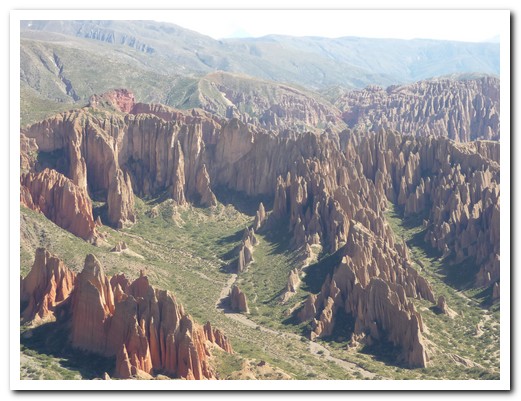
Climbing out of Tupiza
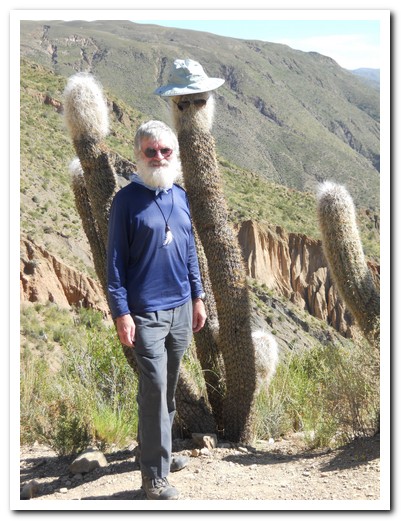
Jeff and twin
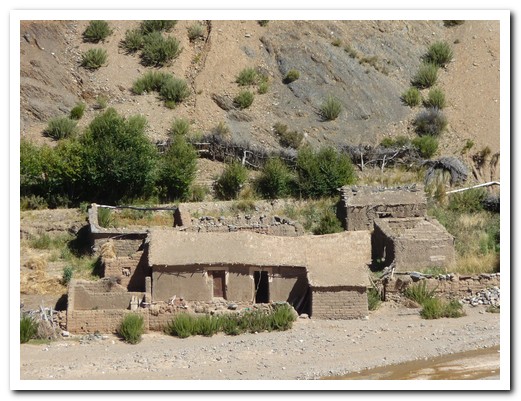
Small adobe village along the way
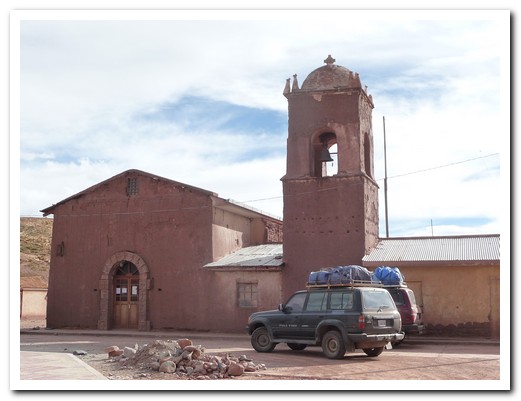
Adobe church
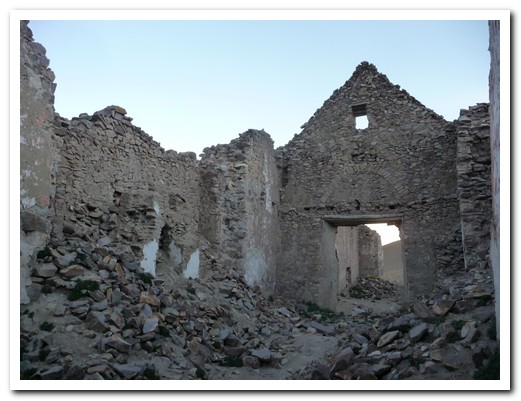
Remains of one of the churches in San Antonio
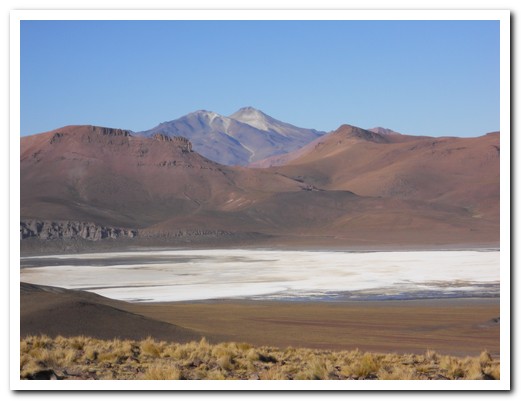
Lagoon white from borax
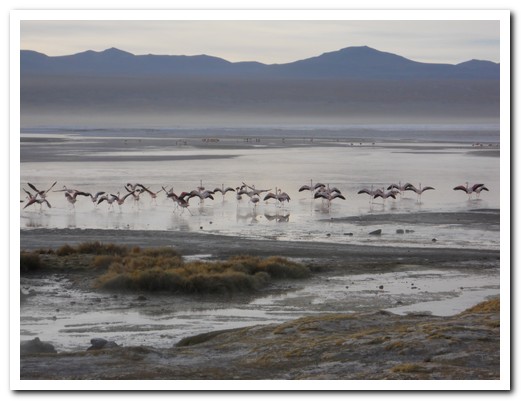
Flamingos take off from Laguna Colorada
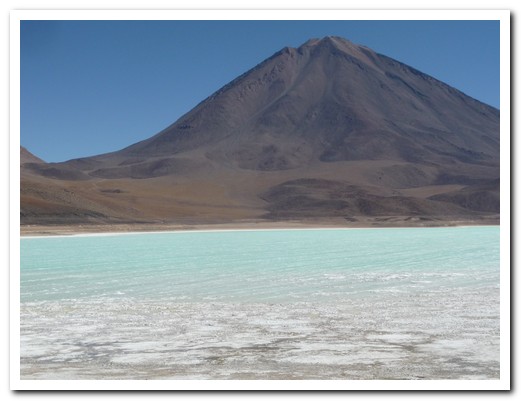
Laguna Verde, green from arsenic and magnesium
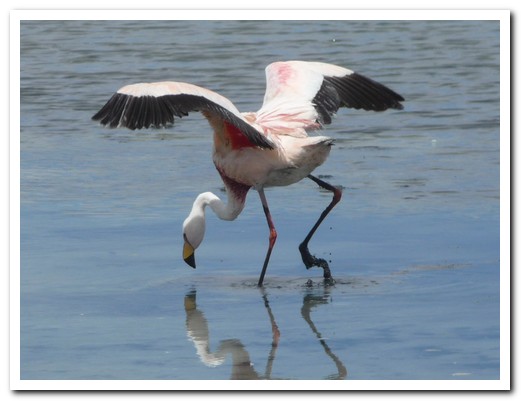
One of the 5 species of flamingo
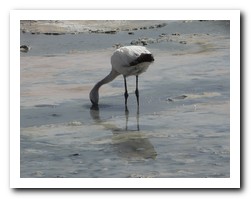
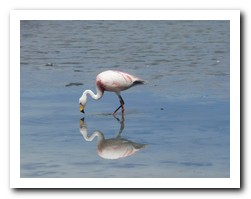
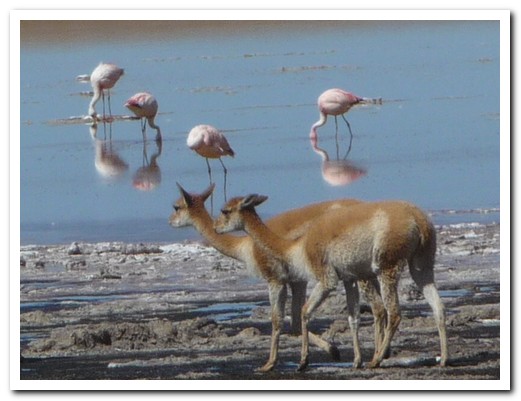
Vicuñas coming for a drink
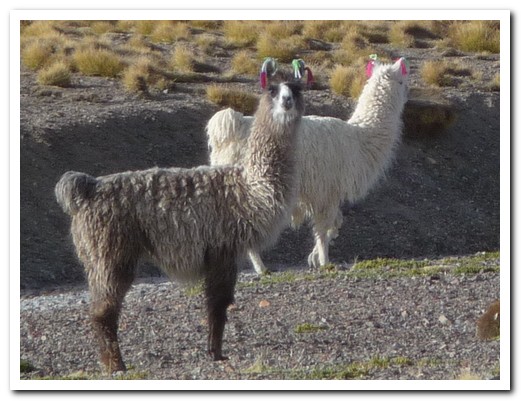
LLamas
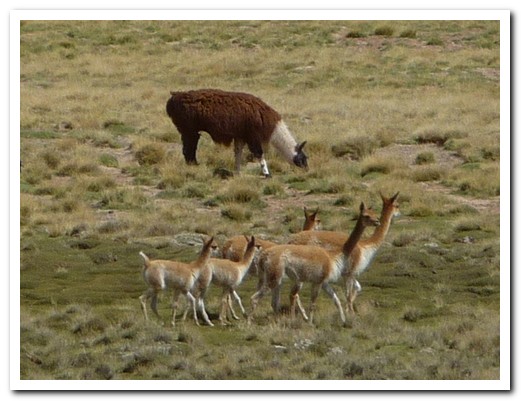
Llamas are bigger and differently coloured than vicuñas
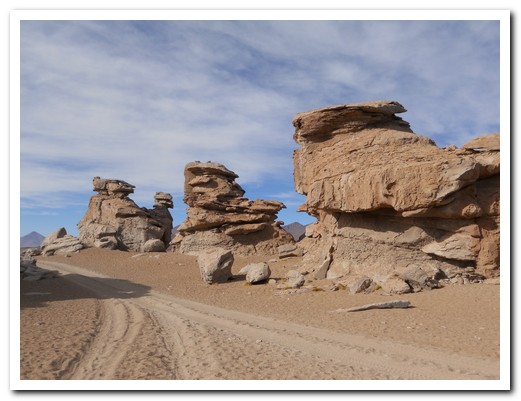
Strange rock formations in the desert
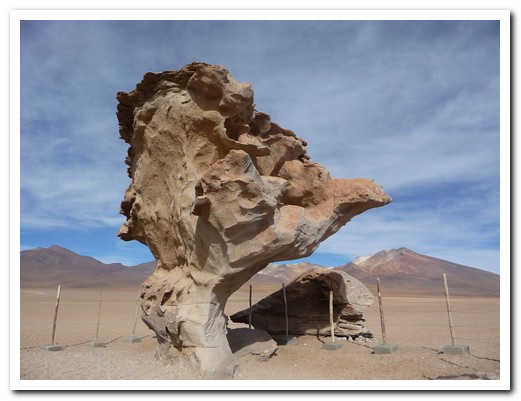
The petrified tree rock
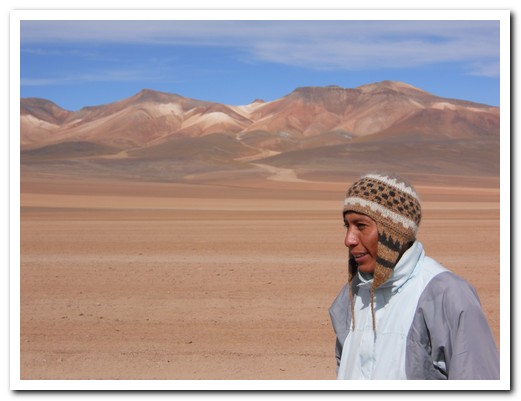
Our guide Victor
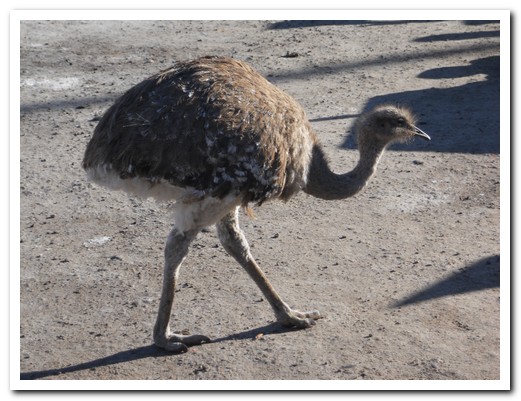
Rhea
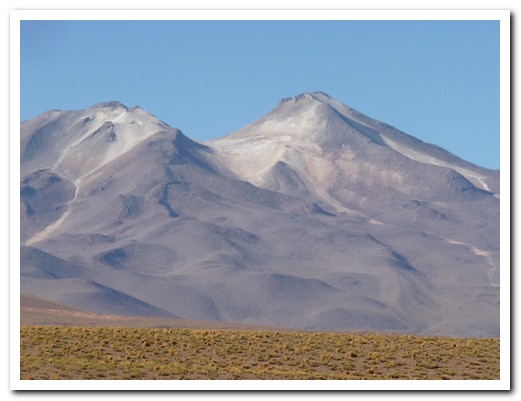
One of the multi-coloured volcanos
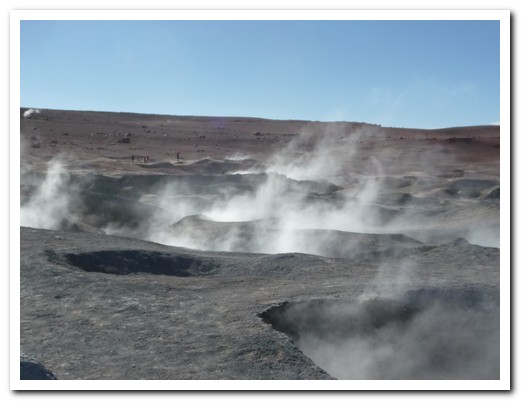
Steaming geysers at 4800 meters
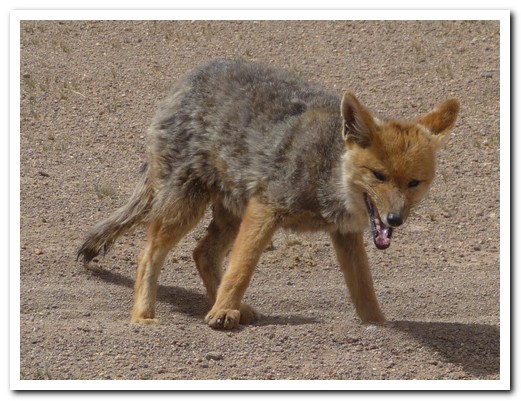
Andino fox
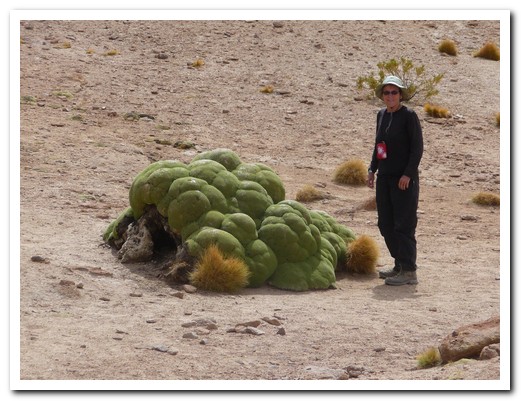
Looks soft, but it is dried and used for firewood
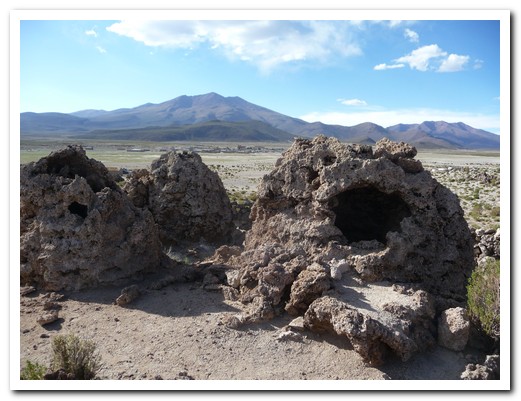
Coral necropolis contains remains of pre Inca people
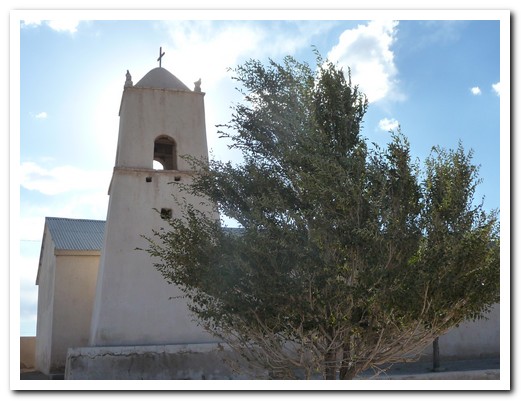
Church at San Juan
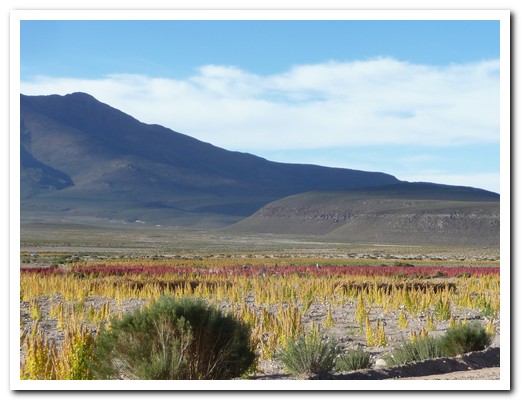
Quinua (Indian grain)
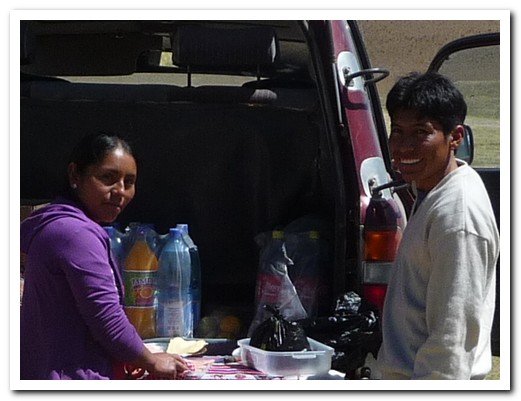
Magali prepares lunch at the back of the landcruiser with the help of Victor
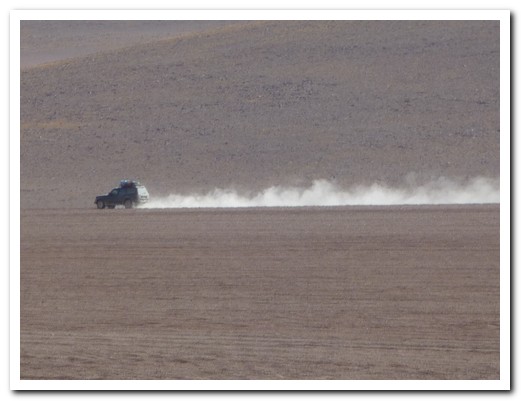
Landcruiser speeding across the desert
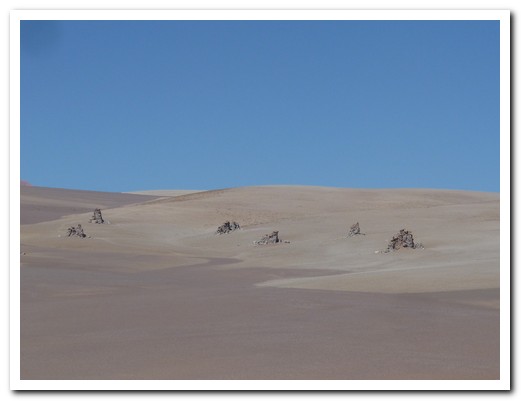
Dalí desert
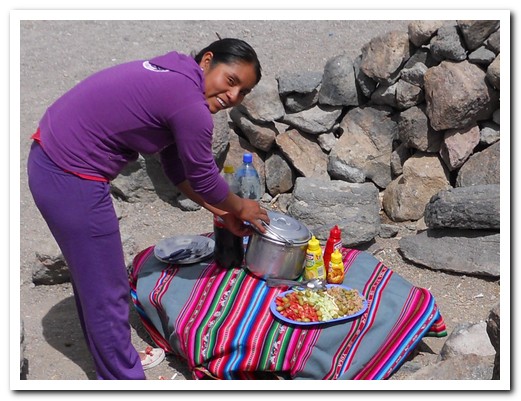
Lunch is ready
Salar de Uyuni (Salt Flats)
13th April 2010
… continuing on our excursion with Tupiza Tours.
.
On the edge of the salt flats, we spent a night in a hotel made entirely of salt – salt brick walls, salt floor as well as salt beds, tables and chairs.
.
Our final day began as the sun rose over the largest salt flats in the world, El Salar de Uyuni (10.5 square kilometres) at 3700 metres.
.
In the middle is La Isla del Pescado (Fish Island), a coral island covered in Cardon cactus.
.
We spent some time composing tricky camera shots on the salt surface before ending our excursion at Uyuni with its train cemetry where all Bolivian trains go when they die.
.
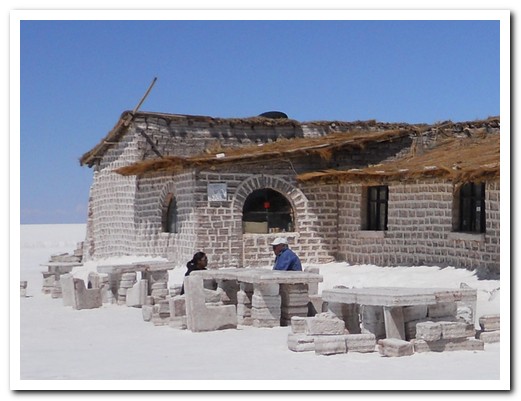
Hotel made of salt
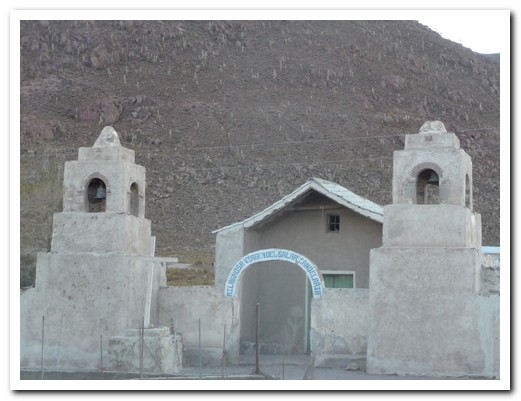
A tiny church on the edge of the salt flats

Sunrise over the salt flats
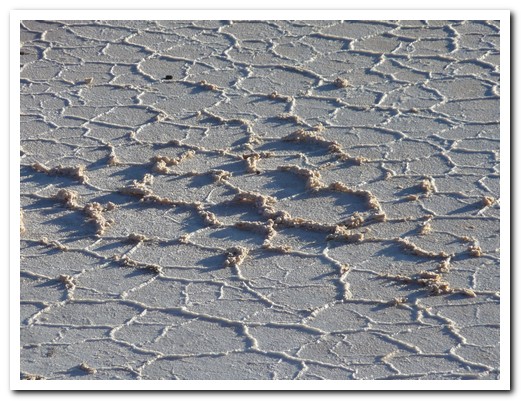
The surface of the salt flats
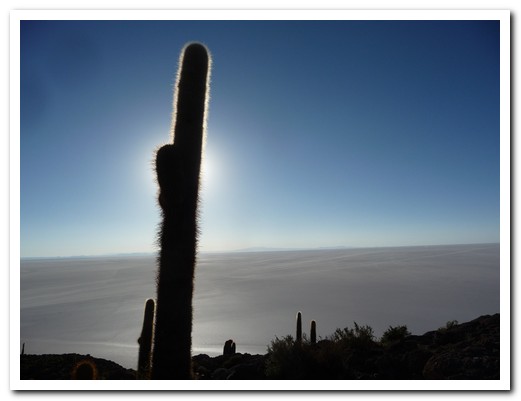
Cactus on Isla del Pescado
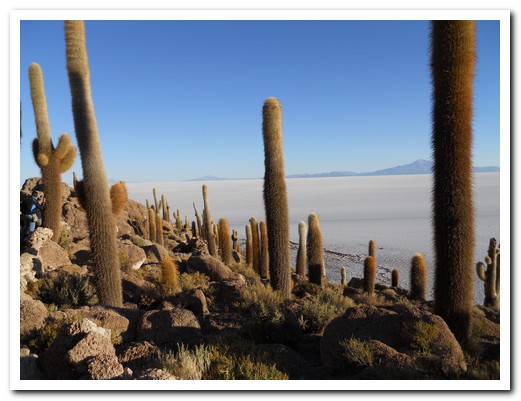
The coral island is covered in cactus
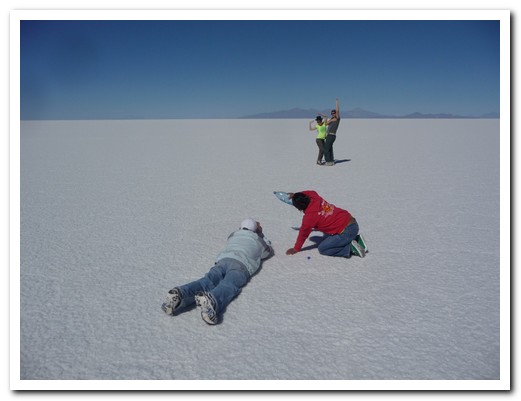
Victor and Magali lining up some tricky camera shots on the salt
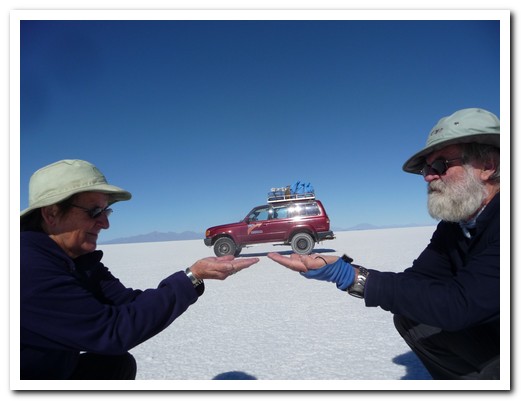

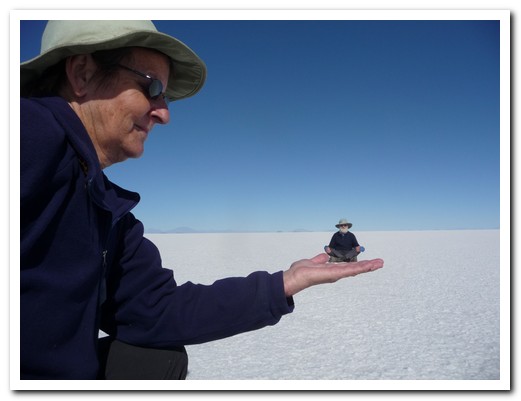
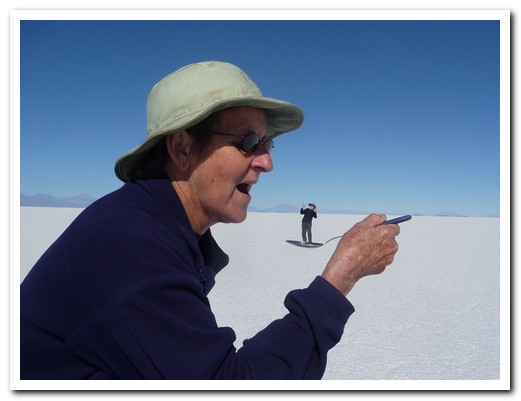
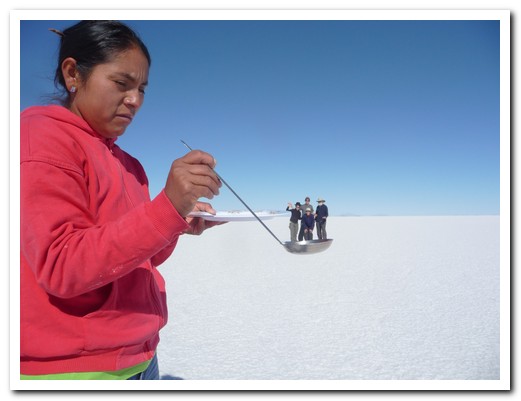
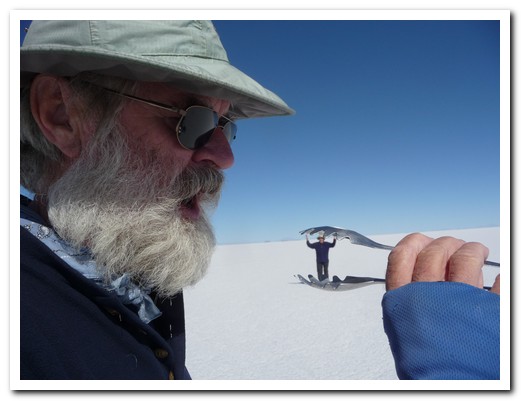
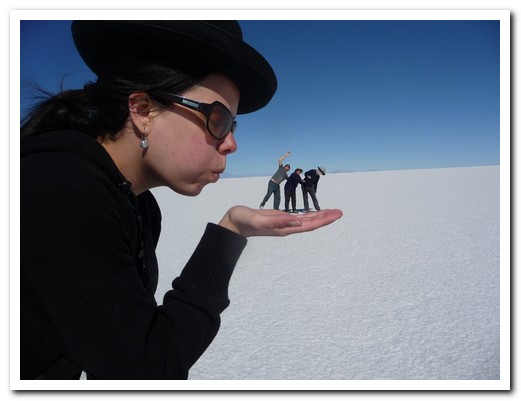
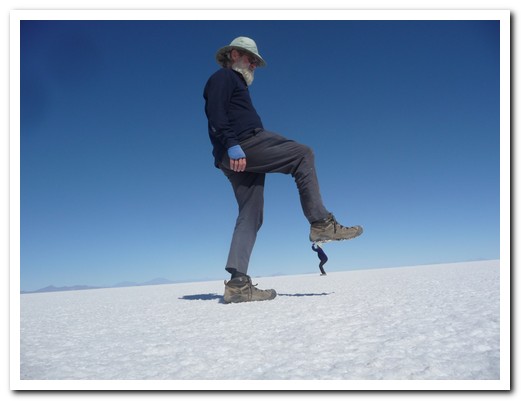
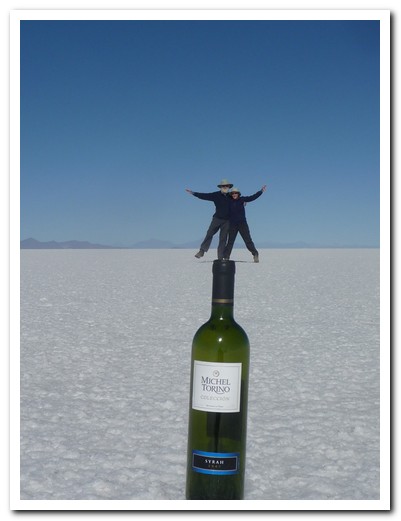

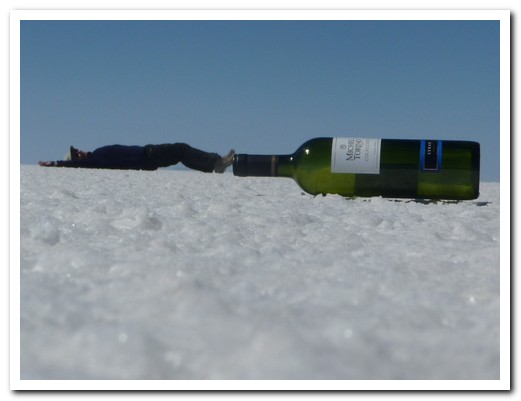
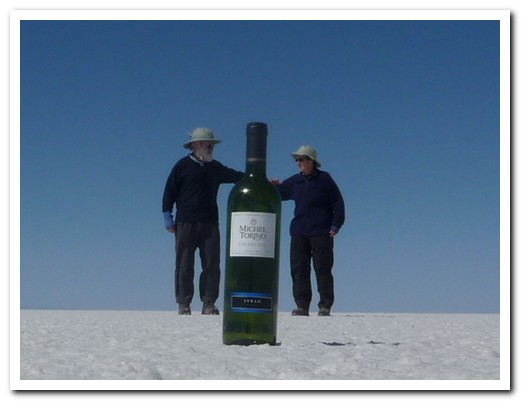
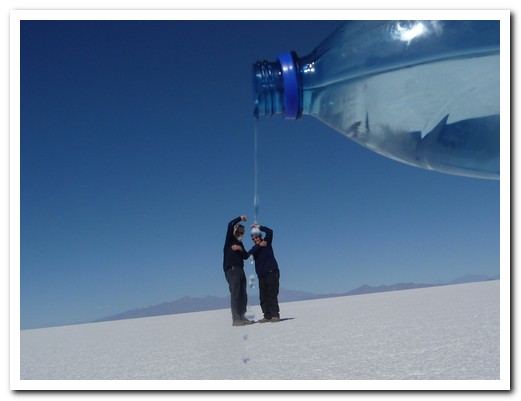
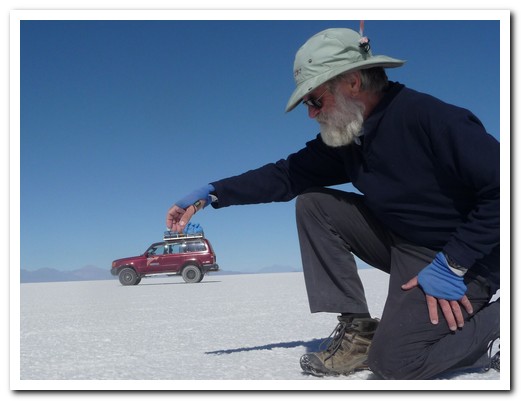
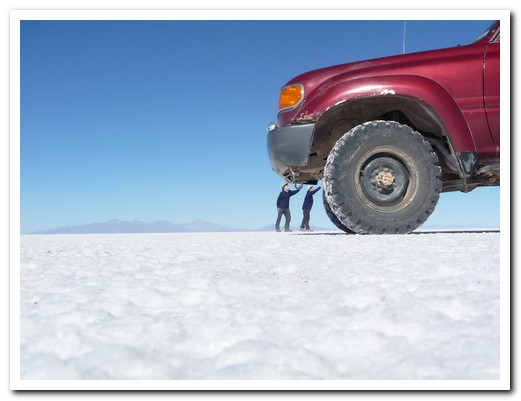

Piles of salt ready for processing
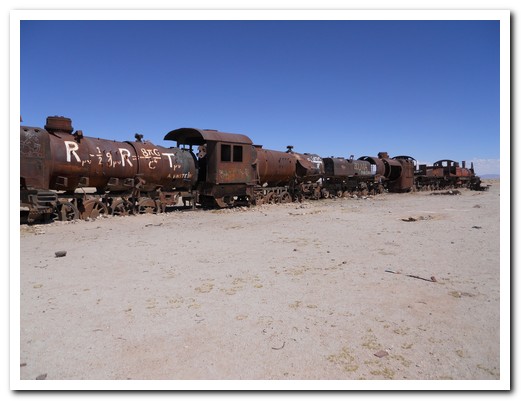
Dead trains at Uyuni
Potosí
15th April 2010
At 4060 metres Potosí, founded in 1545, is the world´s highest city and a Unesco World Heritage which once had over 80 churches and was the richest city in the world.
.
Silver from the mine supported Spain for over 200 years to the detriment of millions of Bolivian and African slaves. Conditions in the mine today are not much better.
.
Many fine colonial buildings remain along the narrow cobbled streets of the old town.
.
The traditional Bolivian women (Cholas) wear their hair in 2 long plaits with a hat on top, a full skirt (pollera) over multiple petticoats and wrap themselves in colourful shawls. Sadly, the younger girls opt for jeans and t-shirts.
.
We were reluctant to leave Potosí but didn´t want to miss out on the little local trolly/train that wound its way around the hills to Sucre, stopping for people waiting by the tracks and at pueblos not reached by road. There were people with big bundles sitting in the aisles, someone had a dog, and someone got on with a bucket full of the local brew. It took twice as long as the bus but well worth it.
.
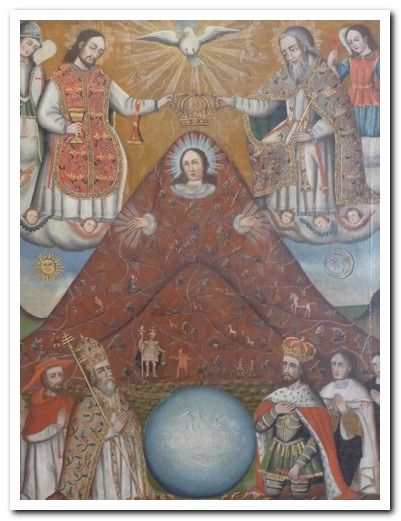
This painting tells the story of the Potosí mine
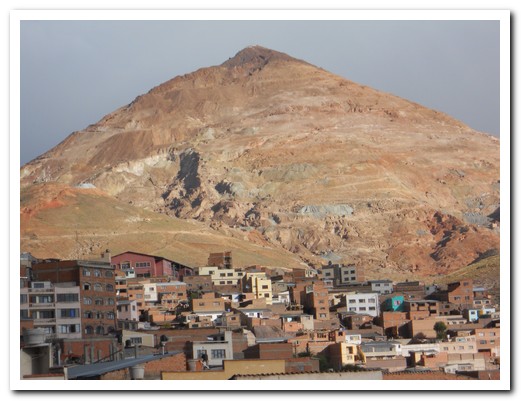
Cerro Rico (Rich Mountain) towers over Potosí
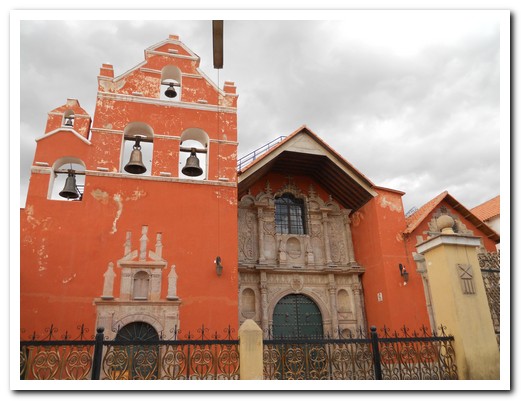
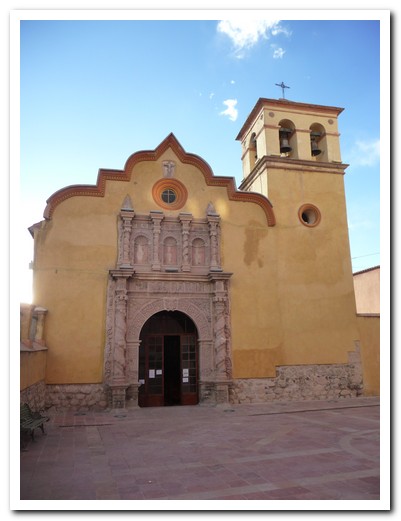
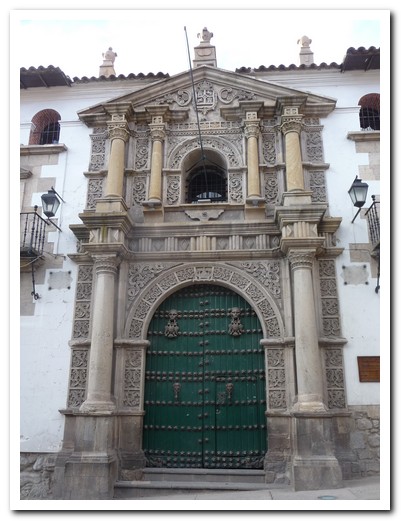
Entrance to the Casa de Monedas (Mint)
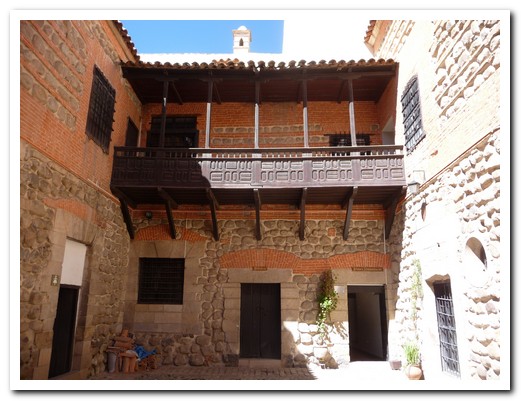
Courtyard inside the Mint
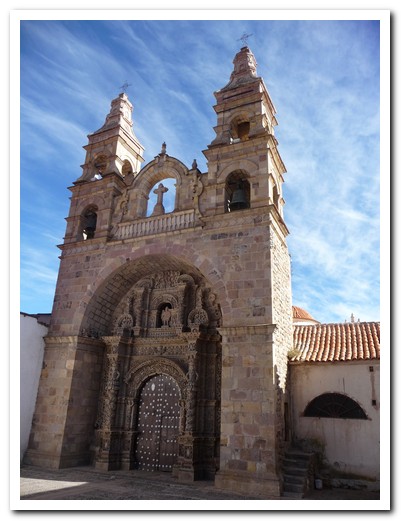
Igelesia San Lorenzo de Carangas from 1728

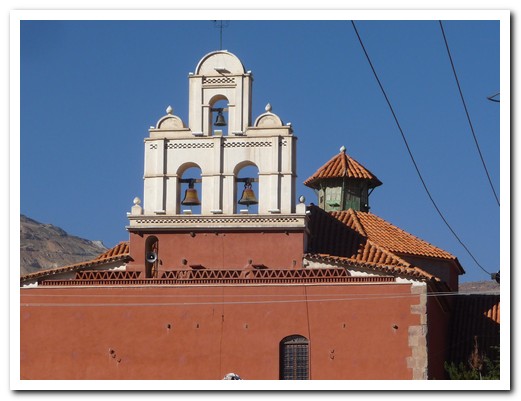
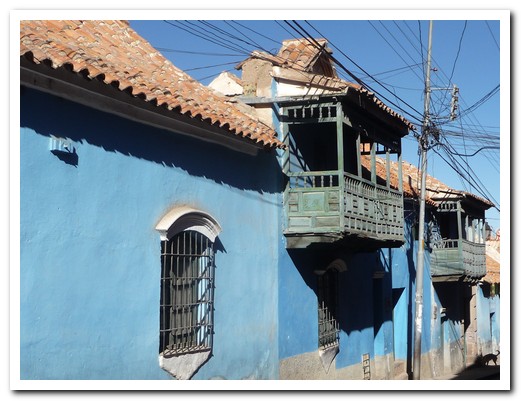
Wooden balconies overhang the cobbled streets
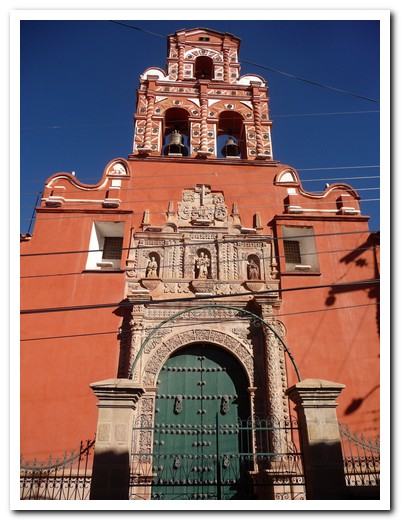
Convento Santa Teresa, from1685, still home to 6 Carmelite nuns
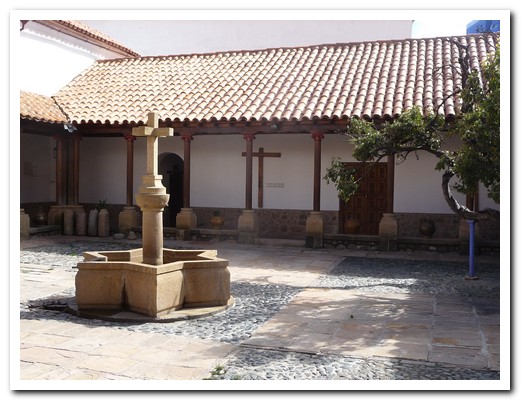
Courtyard of the Convent
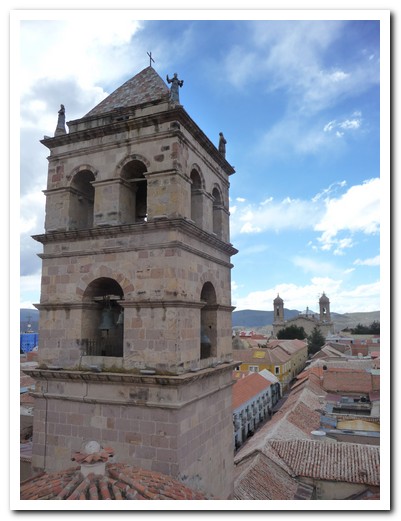
Bell tower of Iglesia San Francisco with the Cathedral behind
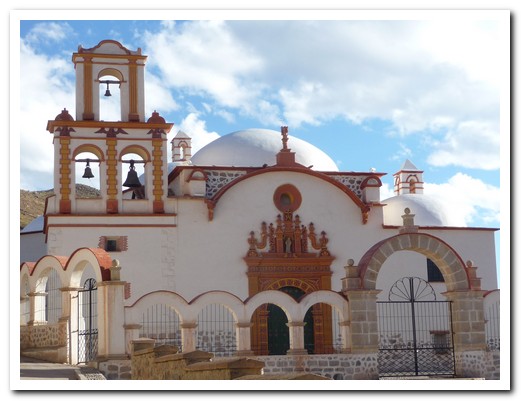
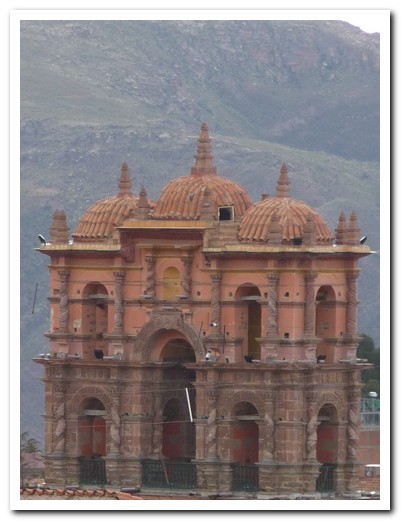
The bell tower is all that remains of the Jesuit Church
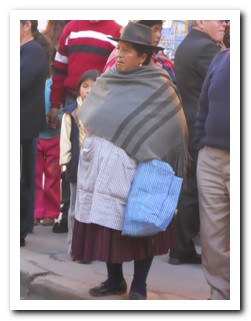
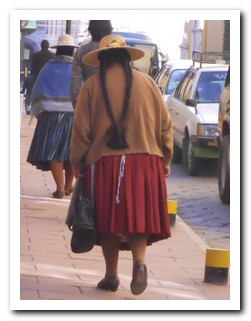
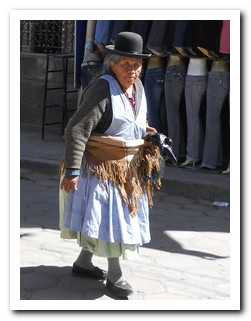
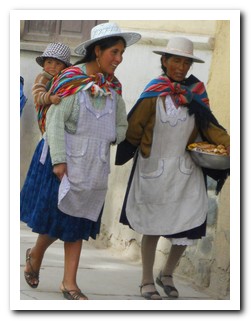
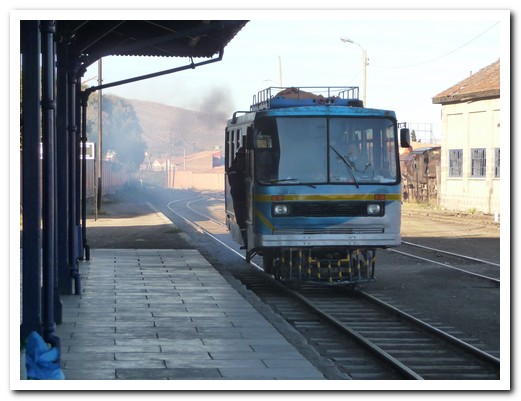
All aboard for Sucre
Sucre – The White City
19th April 2010
Sucre, founded in 1538, is a Cultural Heritage Site. It is a city of dazzling white colonial buildings and churches.
.
There is a bustling central market where anything and everything is sold. The local food is fresh, cheap and good. One of our favourites is papas rellenas (potato balls stuffed with cheese and egg).
.
At Santa Teresa Convent we purchased sweets from the nuns by way of a miniature revolving door which isolates the nuns from the outside world.
.
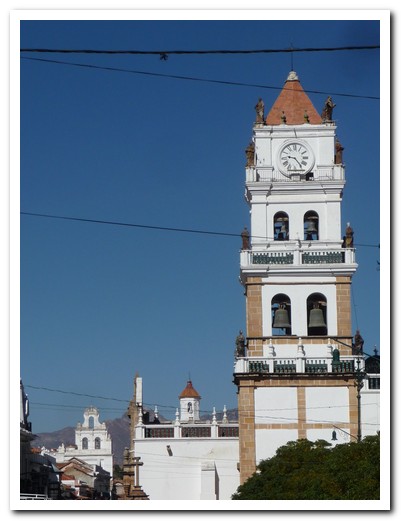
Sucre´s Cathedral with 2 other churches in the background
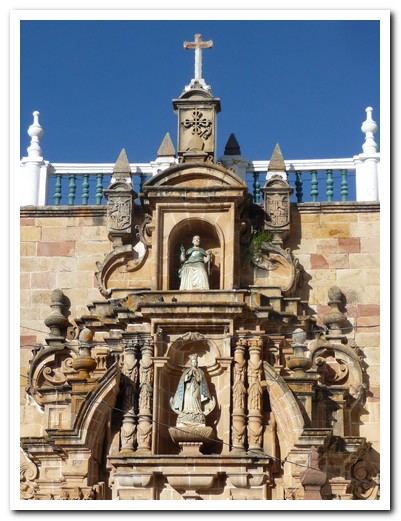
Details of the Cathedral door
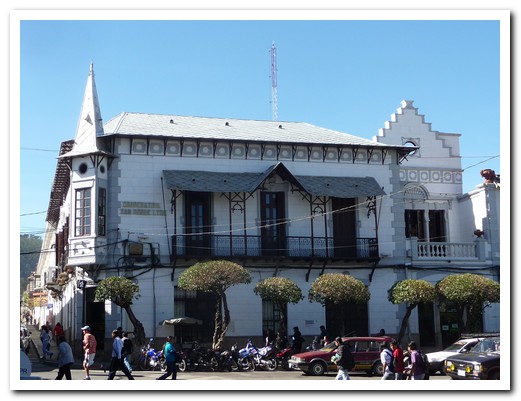
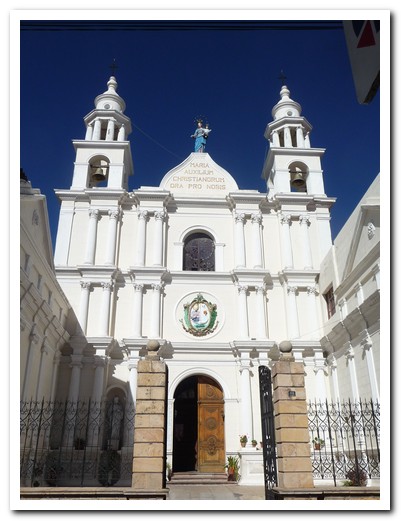
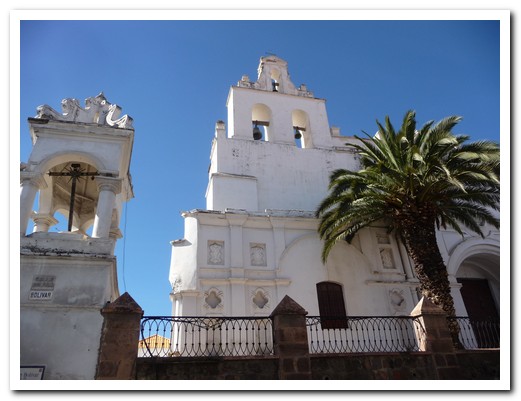
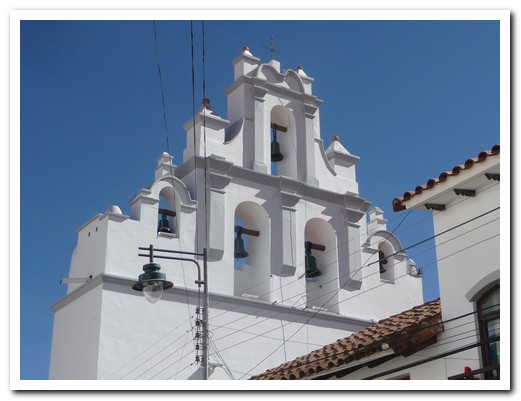

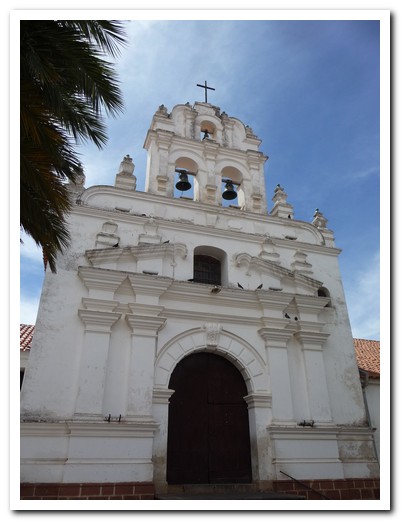
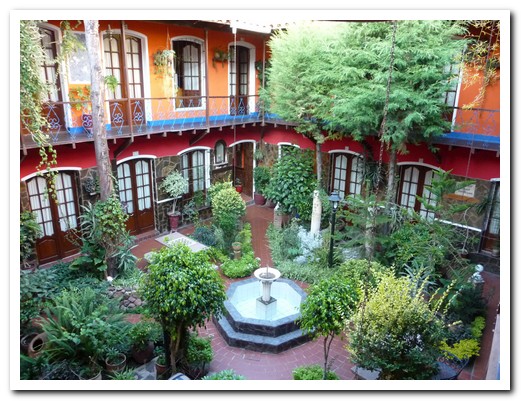
The plant filled courtyard of our hotel
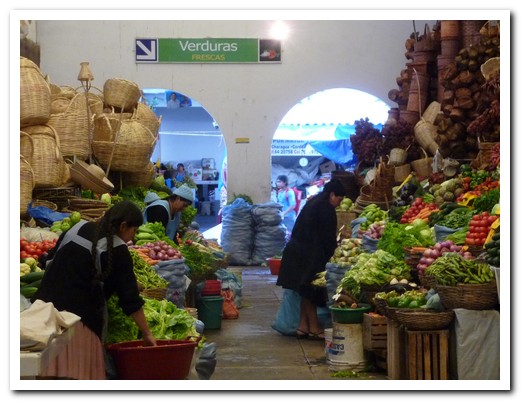
Sucre market
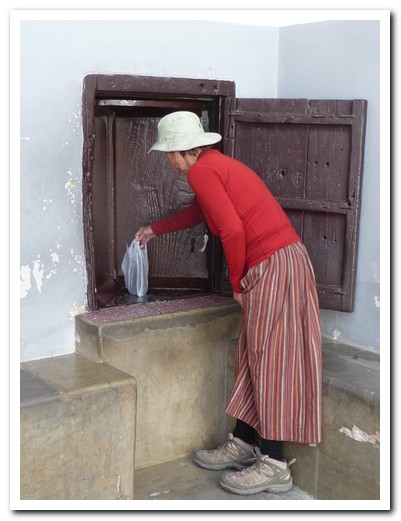
Buying sweets from the nuns through a revolving window
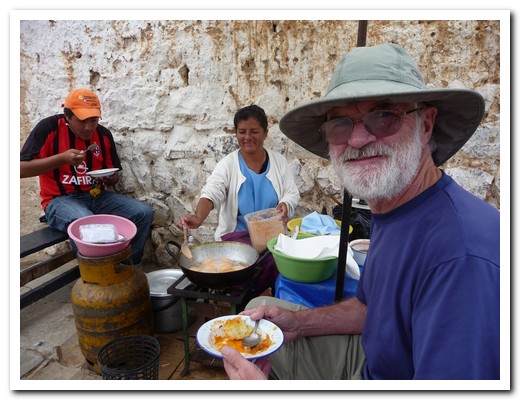
Lunch at the side of the road
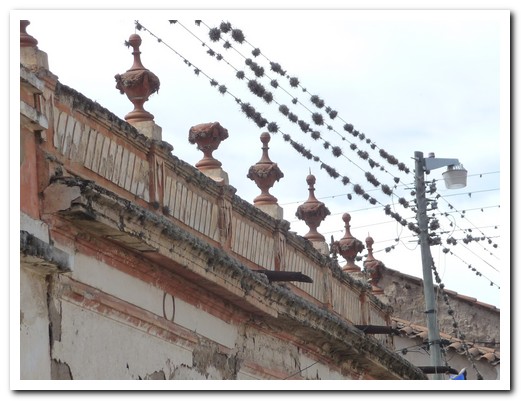
Talansias growing on the power lines
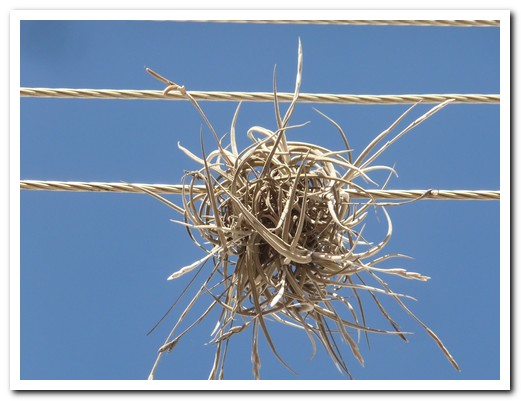
Talansia up close
Cordiellera de los Frailes
25th April 2010
Around Sucre are many little pueblos where the indigenous women weave intricate pieces by traditional methods, dating back thousands of years.
.
Tarabuco, 65 kilometres to the southeast where women weave multi coloured cloth, has a sprawling Sunday market. People from the nearby pueblos arrive in traditional dress.
.
A 4 day trek in the Cordiellera de los Frailes took us through small Quechua speaking communities. Here the women weave black and red cloth panels with no set pattern. The technique has been passed down the generations, each one taking 3 months to complete.
.
We walked along old Inca footpaths, saw dinosaur footprints and pre Inca pictographs. In one of the pueblos we shared a field workers lunch. Potatoes, corn cobs and beans are placed in coals and covered with earth in the middle of the field. The food slowly cooks while the people work.
.

Traditional weaving (note the elaborate border around her shawl)
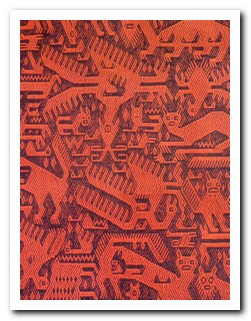
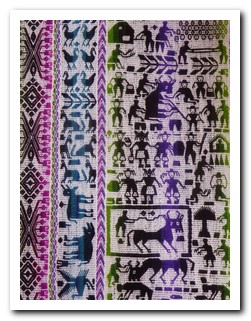
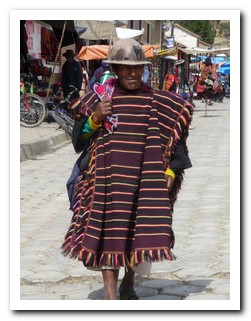
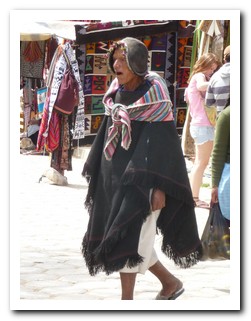
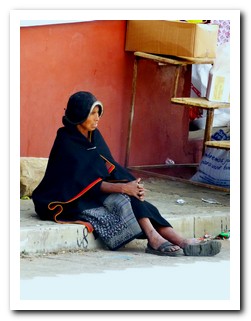
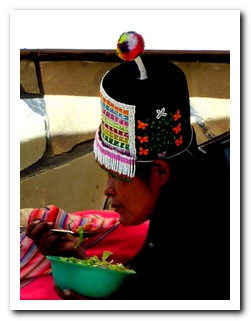
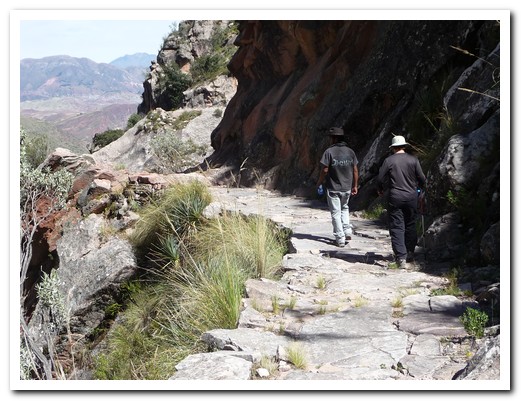
Setting off down the Inca road
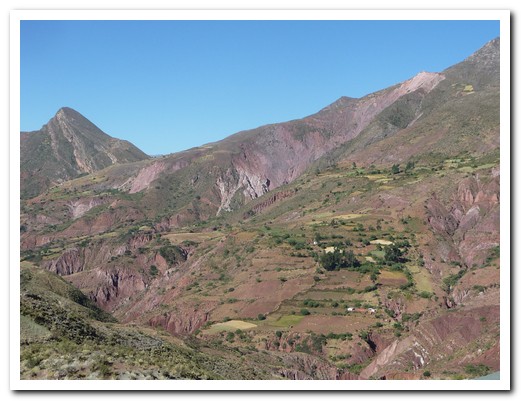
Fields of wheat on the steep sides of the mountains
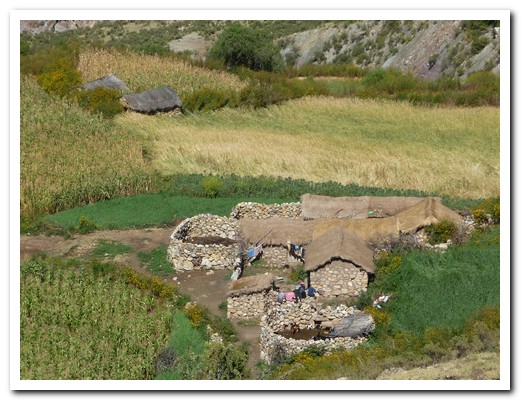
Isolated stone farm house
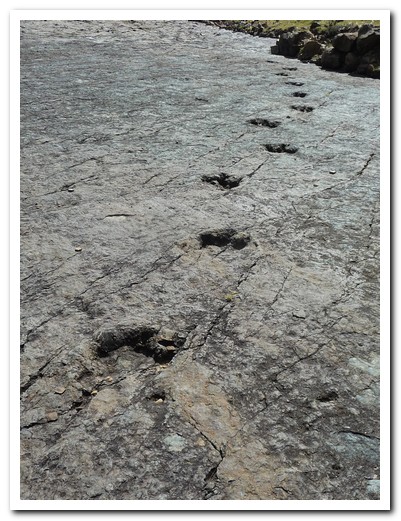
Dinosaurs crossed here
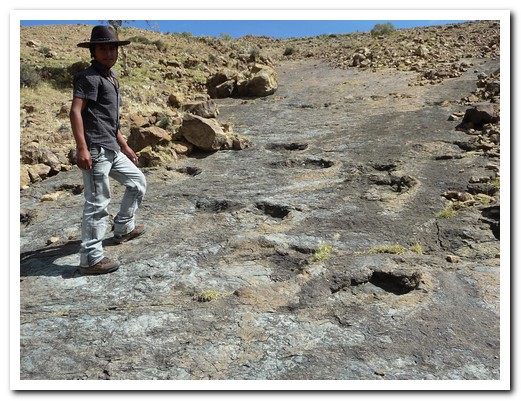
Rubén, our guide, shows us more dinosaur footprints
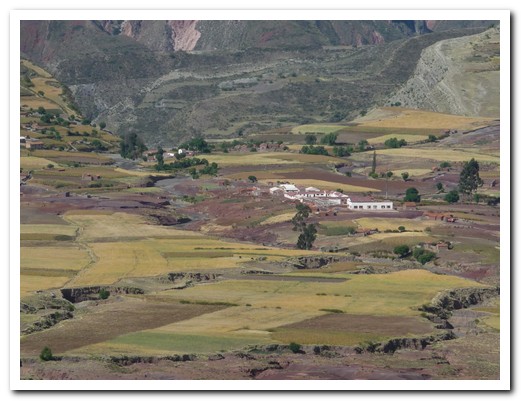
The pueblo of Maragua inside a volcano crater
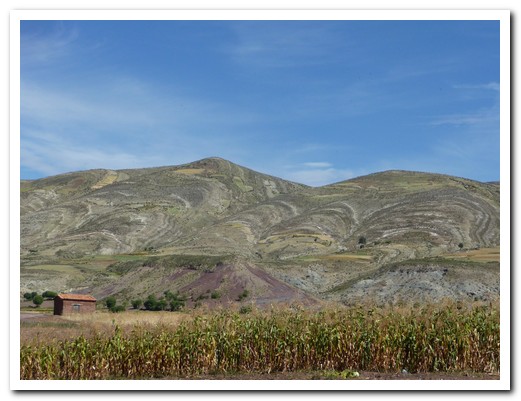
The crater walls surrounding Maragua
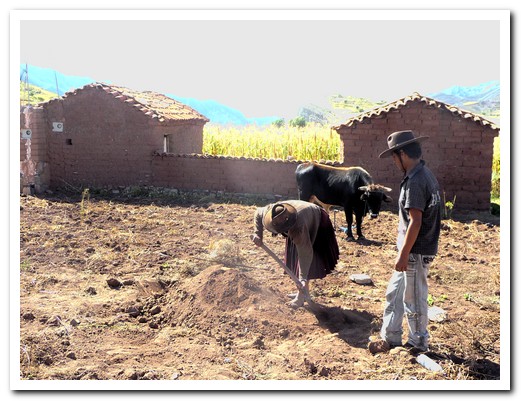
Field workers lunch cooking under ground
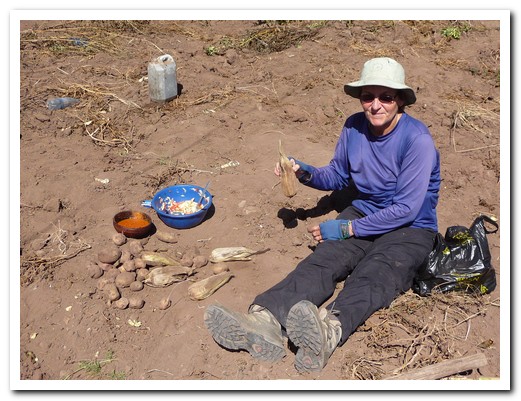
Pam enjoying the lunch cooked in the field, delicious with fresh ground chillies
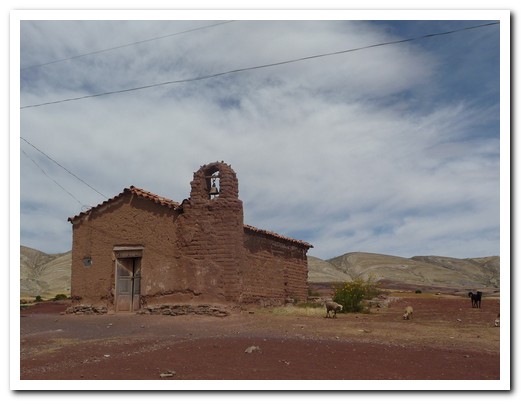
Small adobe church

Old Inca terraces, no longer used
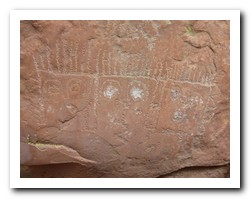
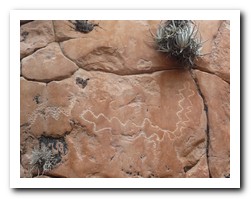
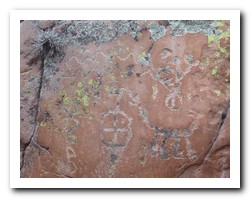
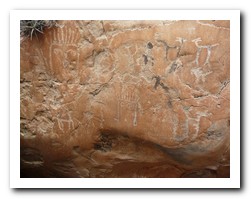
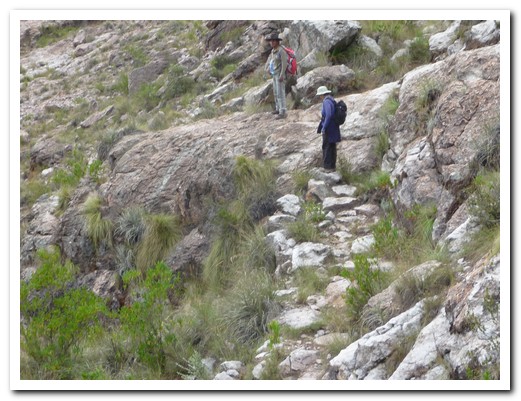
Another Inca footpath
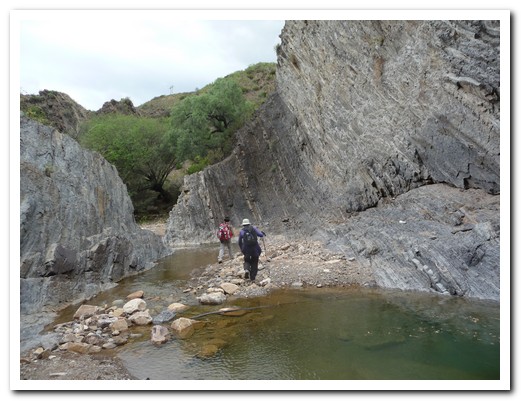
Our walk finished at the end of this canyon
Cochabamba
27th April 2010
Cochabamba lies in a wide fertile valley surrounded by high mountains. It has the usual handfull of colonial churches in the center and a busy market.
.
We hired a taxi for the day to take us into a remote valley to see the rarely visited ruins of the fortified Inca city Incallajta, 150 kilometers from Cochabamba. It is an enormous complex. On the way we visited the little mountain pueblos of Tarata and Totora.
.
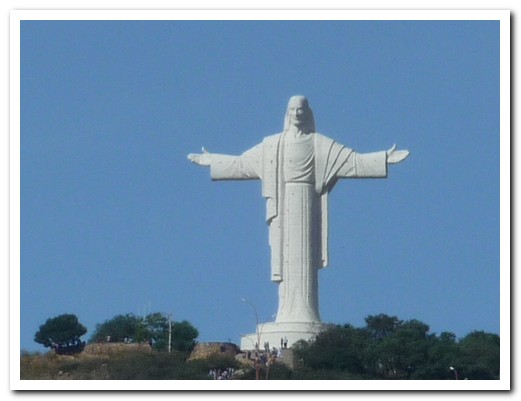
The huge statue of Jesus guards over Cochabamba
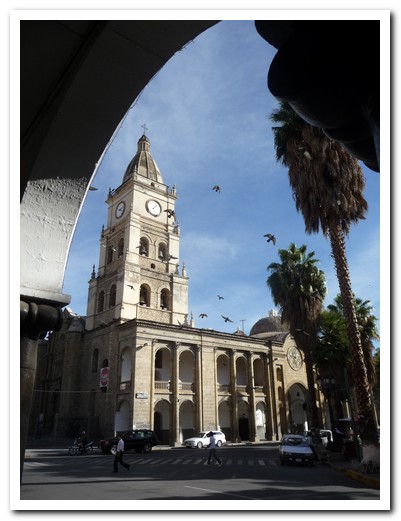
Cochamamba Cathedral
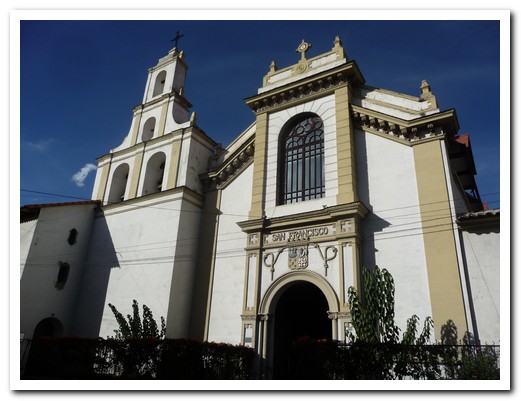
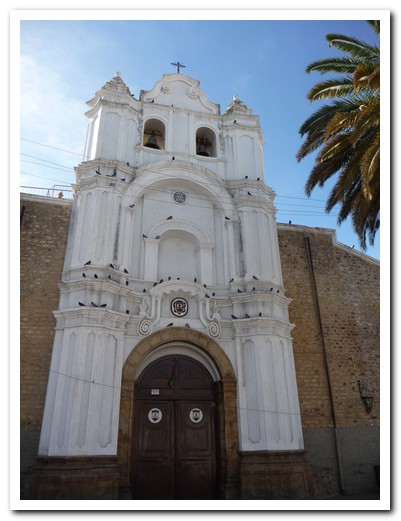
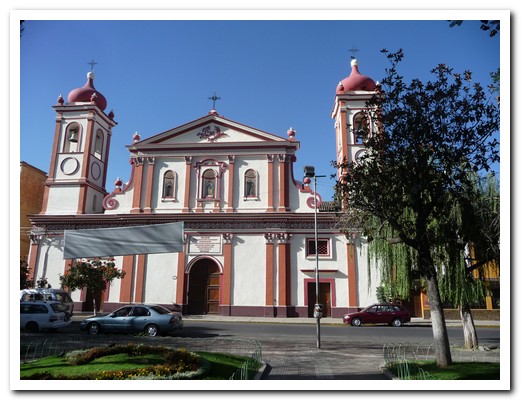
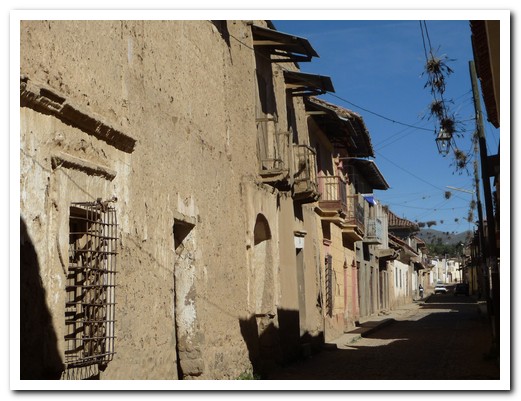
Cobbled street in Tarata
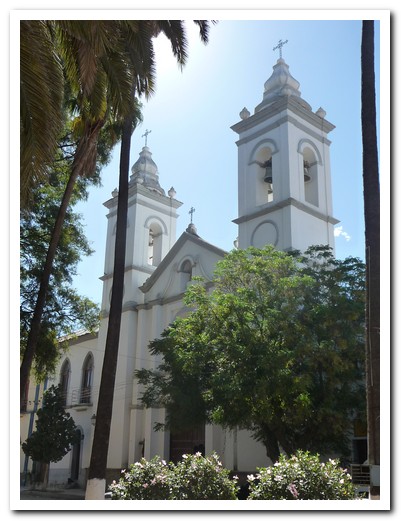
Church of Torata
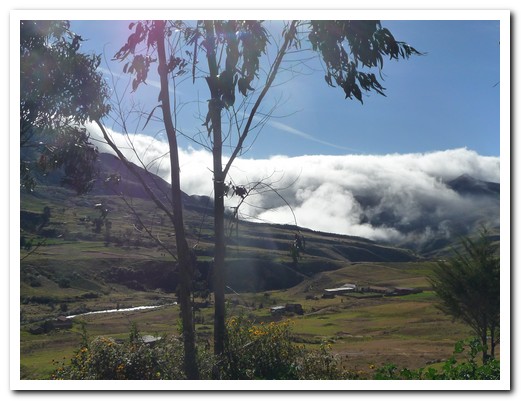
On route to Totora
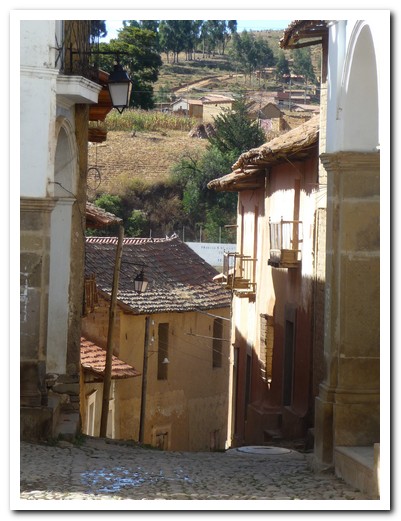
A street in Totora
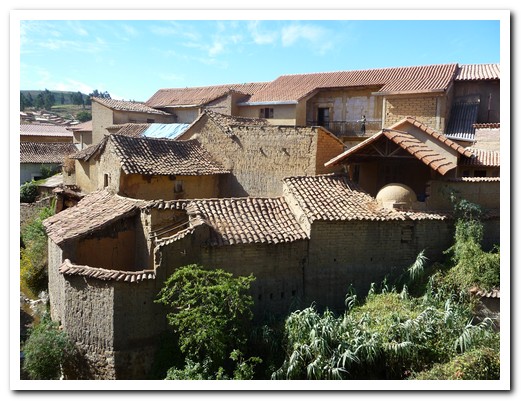
Tiled roofs in Totora
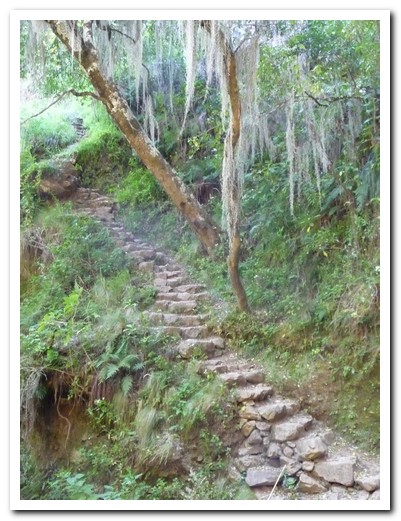
Inca steps leading to Incallajta
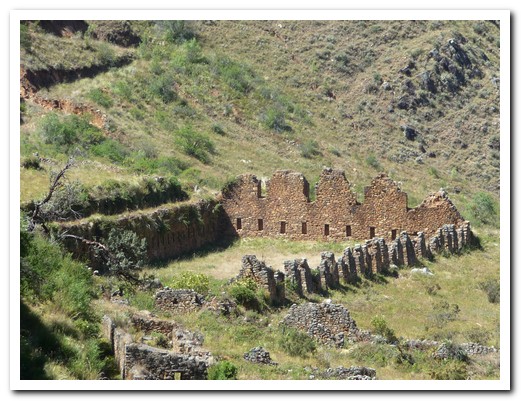
This is the largest Inca roofed structure discovered
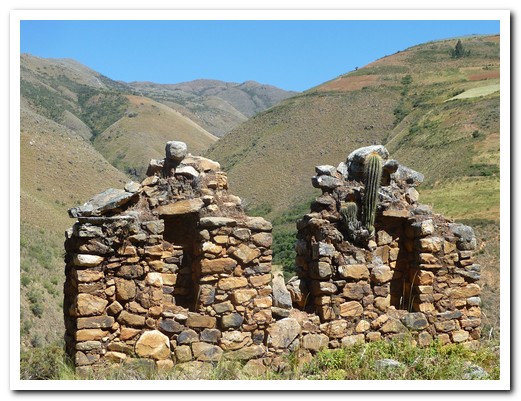
Incallajta ruins
La Paz
01st May 2010
From Cochabamba our bus struggled up towards La Paz, reaching the Altiplano at over 4400 metres, passing lone farms where people were cutting wheat by hand and small pueblos where busy markets were in progress.
.
The first sighting of La Paz city (3660 metres) spilling down both sides of a steep canyon and surrounded by snow capped peaks is always breathtaking (the altitude is breathtaking as well). Once in the city there is hustle and bustle everywhere. Everything is for sale in the streets even dried llama fetuses.
.
The Aymara women (from around Lake Titicaca) wear bowler hats, brightly coloured full skirts and intricate shawls (mantas). Years ago, a local English businessman received a shipment of mens bowler hats by mistake. He managed to convince the Bolivian women to wear them and the new fashion took off.
.
The shoe shine men hide their identity behind ski masks and baseball caps to avoid social stigma.
.
Not far from La Paz are the ruins of Tiwanaku, a pre Inca ceremonial centre, and the most important archaeological site in Bolivia. It is slowly being excavated and partly restored.
.
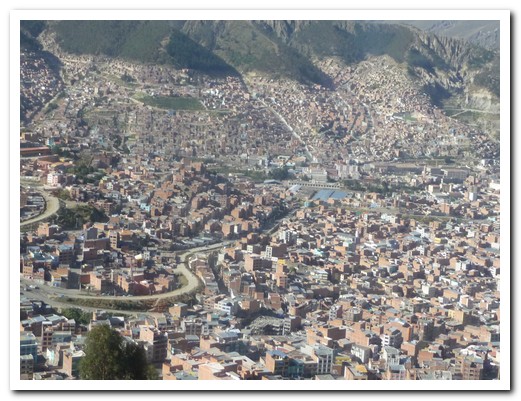
La Paz
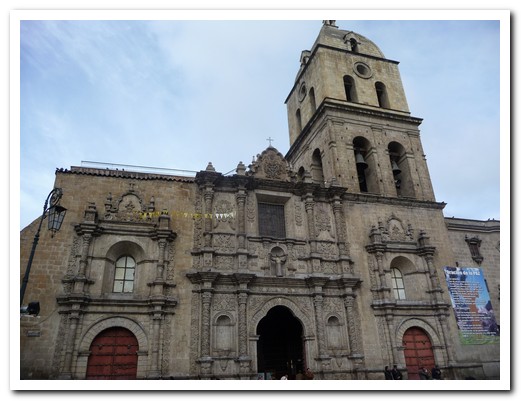
Iglesia San Francisco
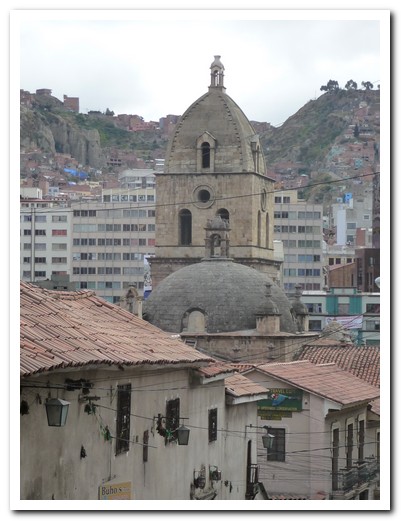
The back of Iglesia San Francisco
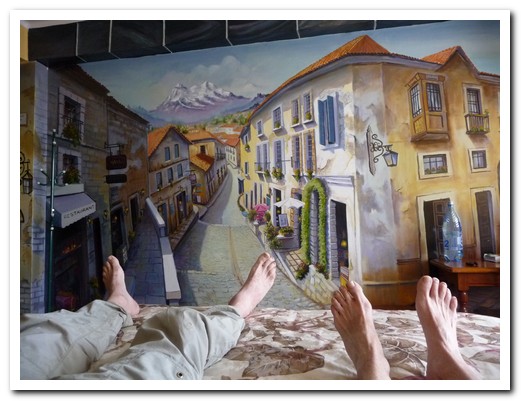
Our bedroom in Hostal Estrella Andina
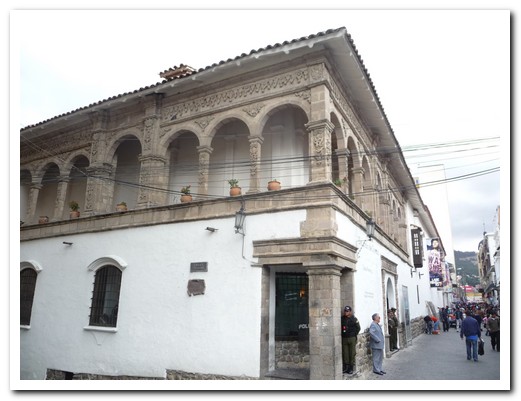
The old centre
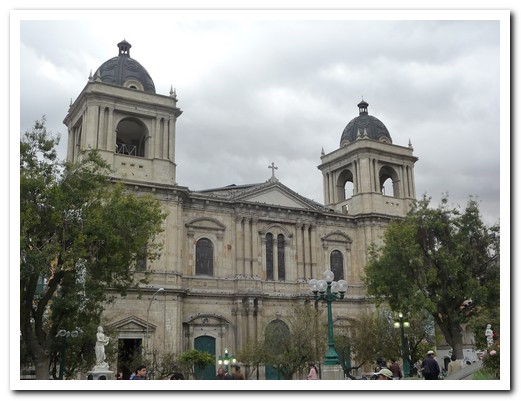
La Paz Cathedral
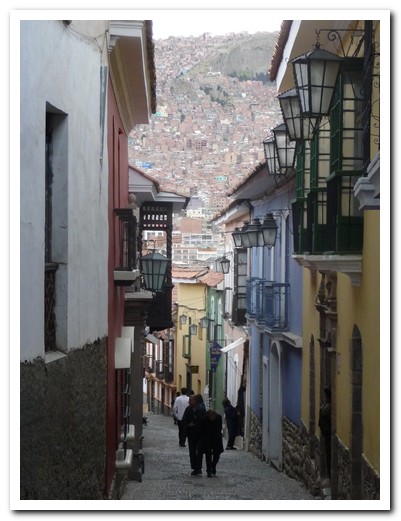
The original Spanish area
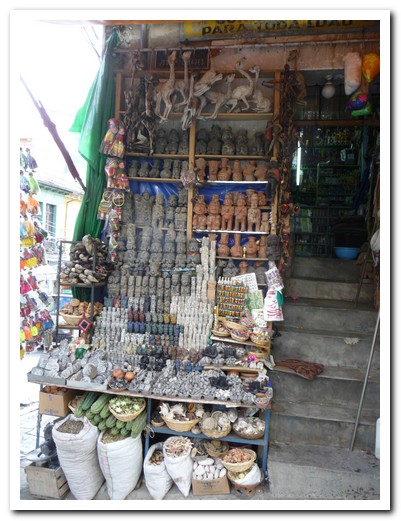
Witchcraft stall
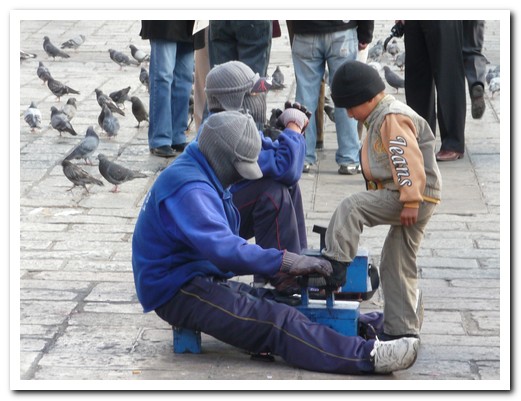
Shoe shiners
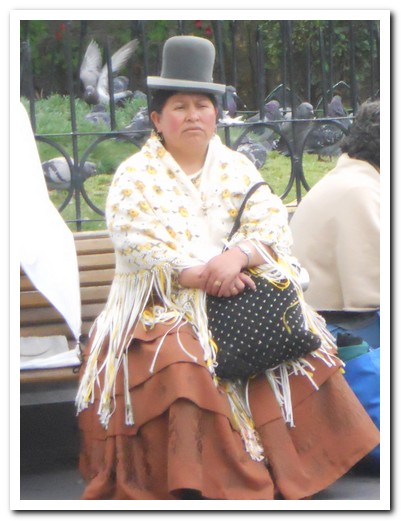
Typical Aymara dress
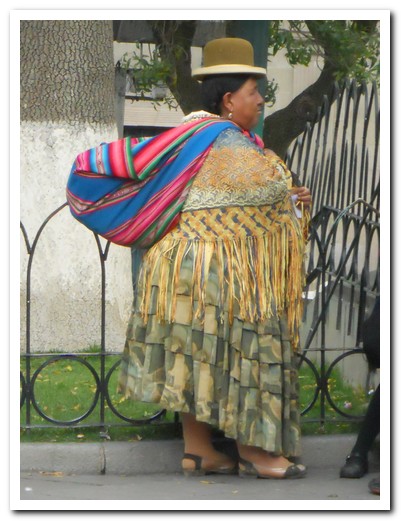
The Cholas wear beautiful skirts and shawls

Partly reconstructed Akapana Pyramid at Tiwanaku
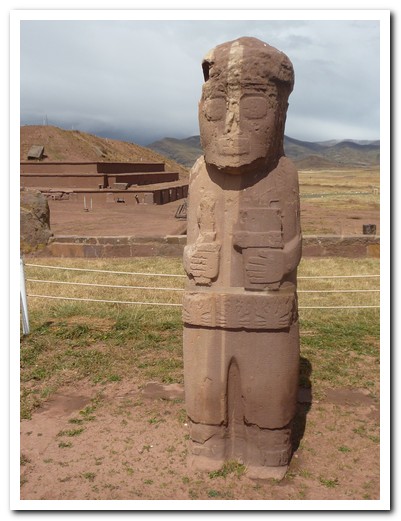
Stone monument (different colours from being half buried)
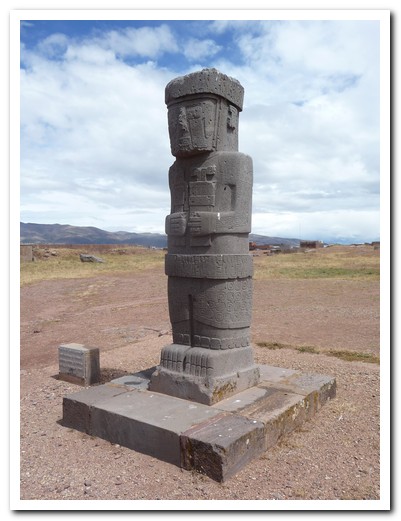
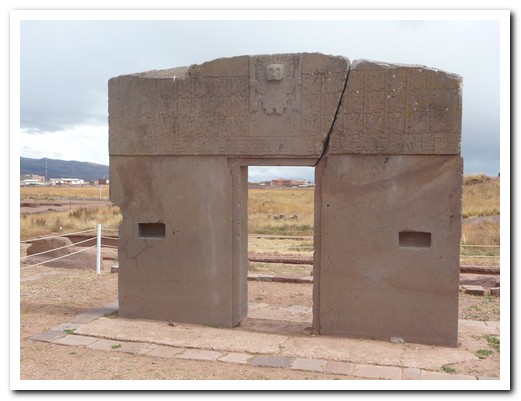
The sun gate with calendar across the top
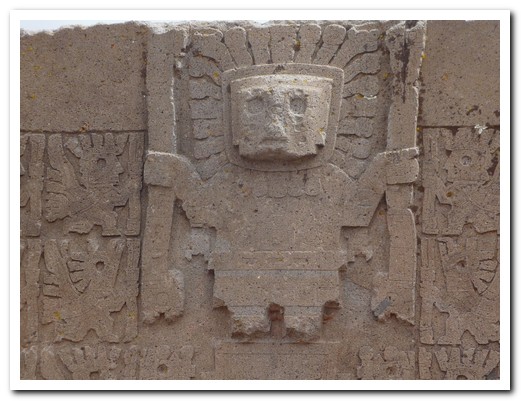
The sun represents the month of September
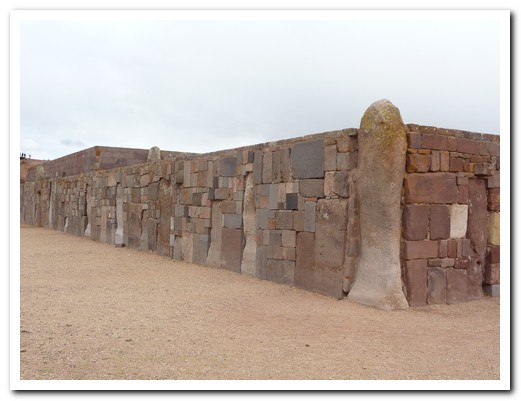
Different rocks were used for the east and north walls
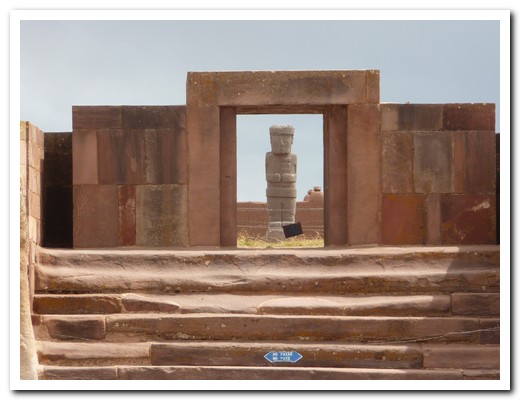
The sun shines through here at dawn on the 21st June
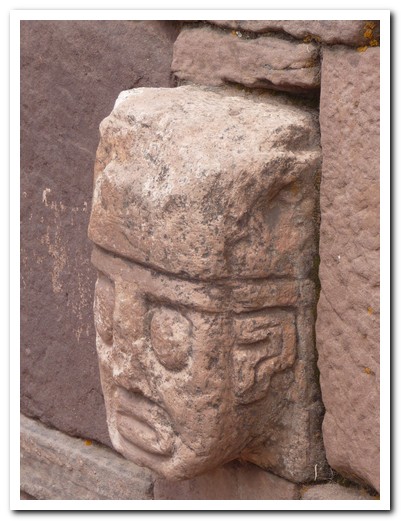
One of the carved heads in the wall of the subterranian temple (note wad of coca leaves in one cheek)
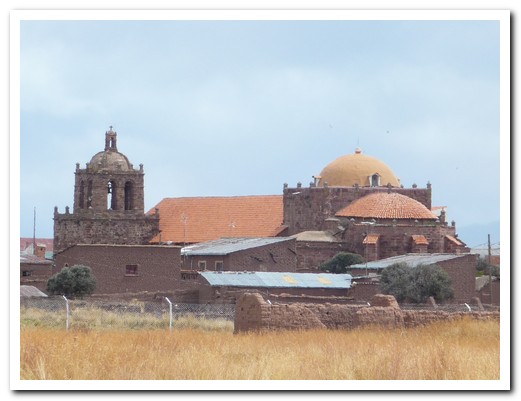
The Spanish took stones from Tiwanaku to build this church nearby
From the mountains to the jungle
06th May 2010
From La Cumbre at almost 5000 metres in the Cordillera Real north of La Paz, we began the Choro trek organized by Deep Rainforest. We set off down a 900 year old stone footpath covered in ice which soon melted as we descended steeply. The path was the main route between the Altiplano and the Amazon region and is still used and maintained by the small communities living along the way who travel up and down on foot.
.
The first day, led by our capable guide Guido, we descended 2000 metres. Our muscles felt it the next day descending another 800 metres before a steep climb after which the path levelled off to follow around the mountainside hundreds of metres above the valley.
.
The treeless slopes and grazing llamas gave way to forests of trees covered in old man’s beard, supporting orchids and bromeliads getting moisture from mist off the waterfalls and clouds filling the valleys. We camped 2 nights perched on the side of mountains with spectacular views across the valleys.
.
We set off at dawn on our last day, the rainforest dark and dripping moisture, the path overgrown in places. We came across a little bent up old Japanese man, Tamiji Hanamura, 89 years old who had been living by himself in this isolated spot for more than 50 years. He loves to talk to visitors and show them his many post cards from different parts of the world and shares his lovely garden with campers.
.
Our trek ended in Chairo at 1300 metres from where we took a scary taxi ride up to the hill town of Coroico where we spent the night before returning to La Paz. Between La Paz and Coroico used to be the “world’s most dangerous road”. Now that there is a new road for traffic, tour operators offer “the world’s most dangerous bike ride” on the old one.
.
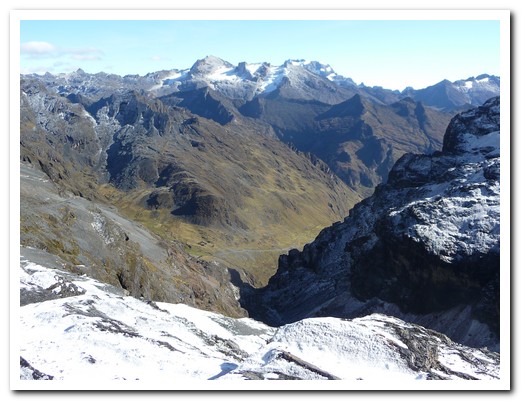
Starting out in the snow at almost 5000 metres
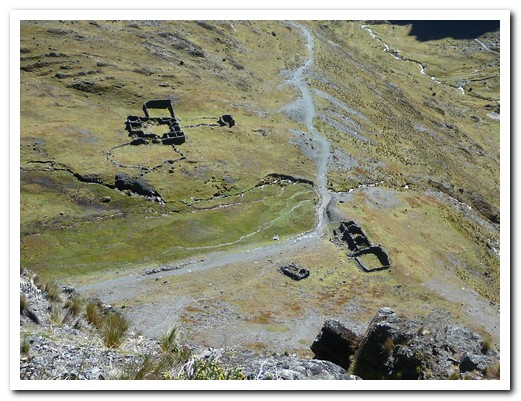
Ruins of Inca resting places along the trail
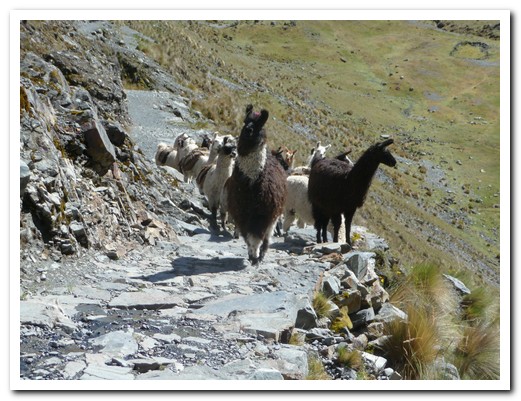
Llamas on the path
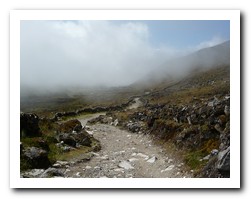
The clouds fill the valley
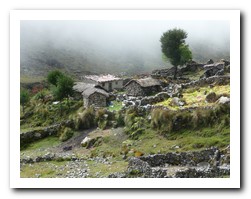
Leading to the village
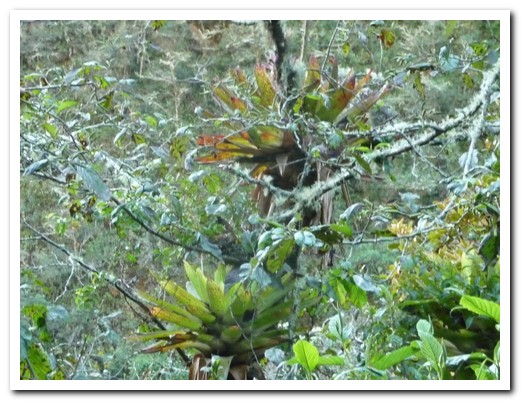
Bromeliads grow in the trees
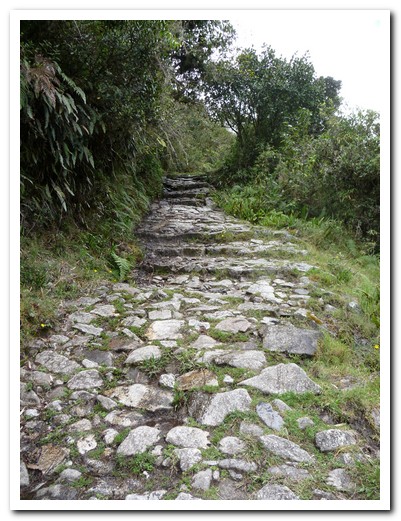
Beautiful 900 year old path
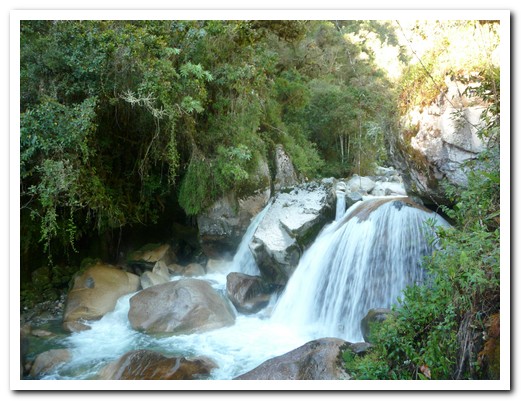
One of many waterfalls
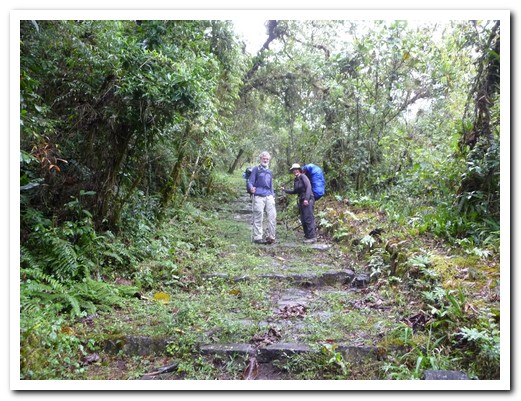
Climbing the Cuesta del Diablo (Devil's Hill)
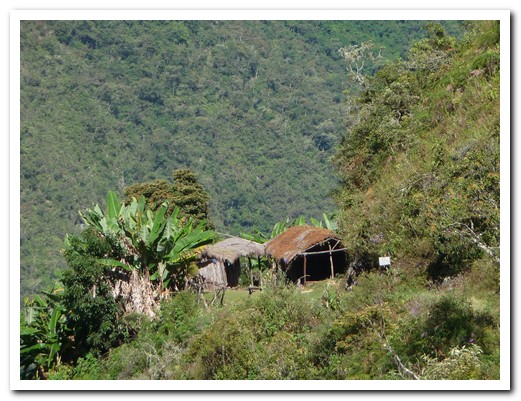
Overnight stop with a view
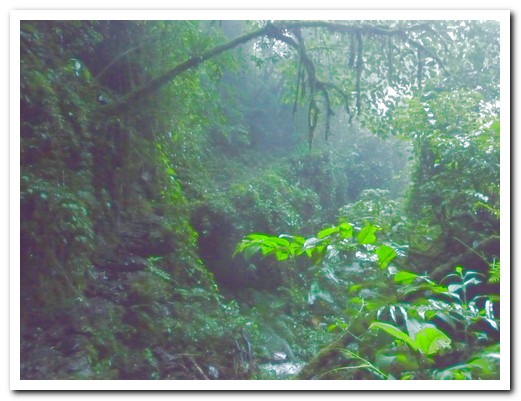
Now we are really in the jungle!
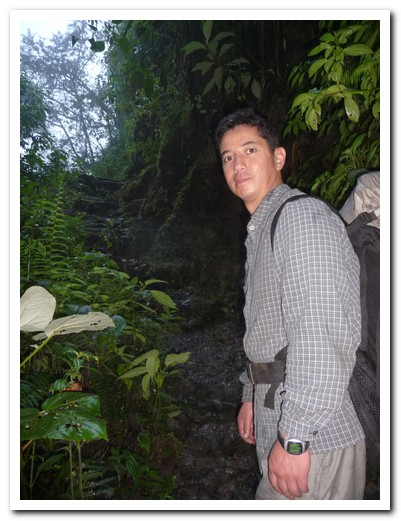
Our guide Guido stops to wait for us oldies
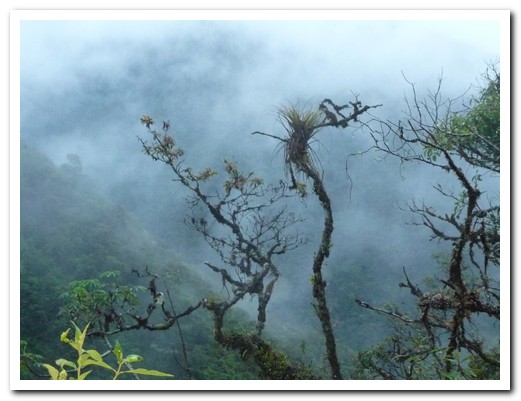
Inside the cloud forest
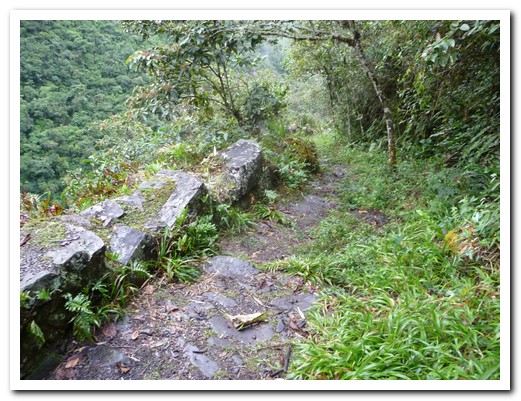
Ancient walls retain the path
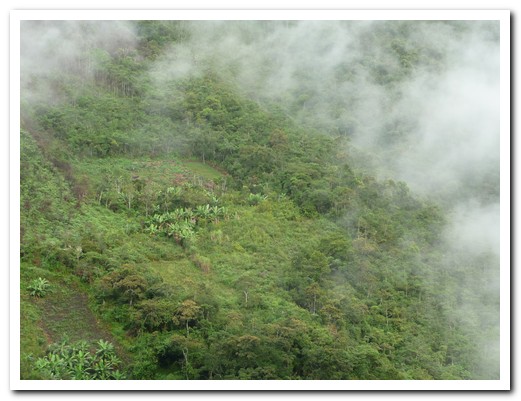
The gardens are almost vertical
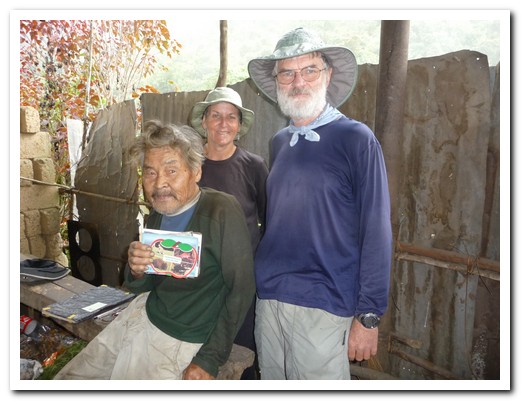
Mr Tamiji Hanamura enjoys talking to passing visitors
Sorata trek
11th May 2010
There are many trekking opportunities from La Paz and many adventure companies. We chose a trek for 2 people with Zig Zag Eco Tours starting in the peaceful mountainside town of Sorata (2700 metres), 3 hours north of La Paz. The bus makes its way down a spectacular valley dotted with communities and their colourful fields of maize.
.
Together with our experienced guide Ivan and great cook Syrle, we began the punishing climb up to the sacred Lake Chillata at 4200 metres where we camped for 2 nights beside the lake. The snow capped mountains were reflected in the still water, the fog rolled in and out. Our packs and the rest of the gear went up ahead on 2 mules led by Don Vicente.
.
The next morning we set off in the mist to climb up to Laguna Glacial at 5038 metres. Syrle had made a delicious picnic lunch which we enjoyed beside a stream below the glacier at 4800 metres with views down to Lake Titicaca. Lack of time and fitness as well as the high altitude prevented us from going all the way to the lake but we were more than happy to turn around where we did.
.
Our final day was the steep descent back down into the cloud filled valley. The weather was perfect, the Illampu mountains clearly visible behind us as we trekked towards Sorata.
.
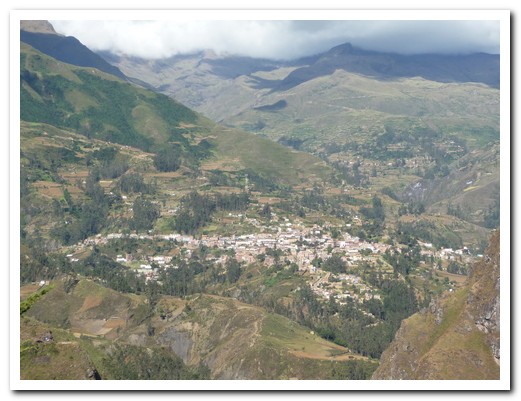
Sorata nestled in the mountains
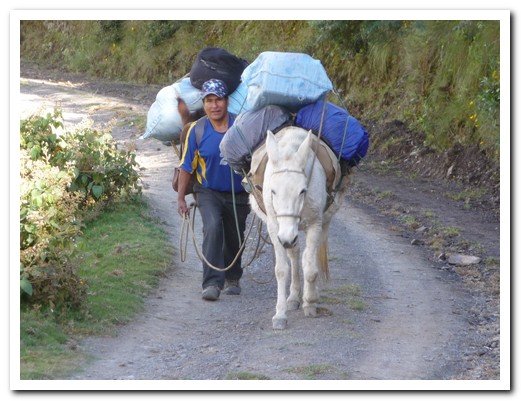
Don Vicente and his mules carried our equipment and food
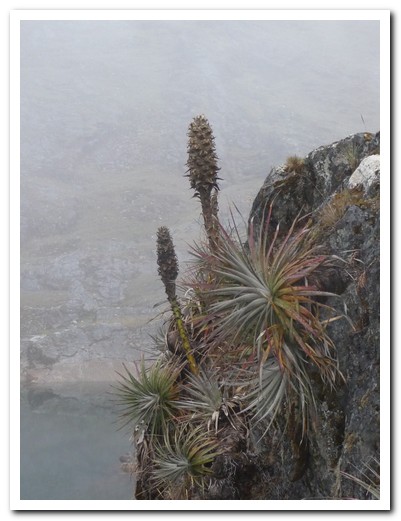
Bromeliads clinging to the rock
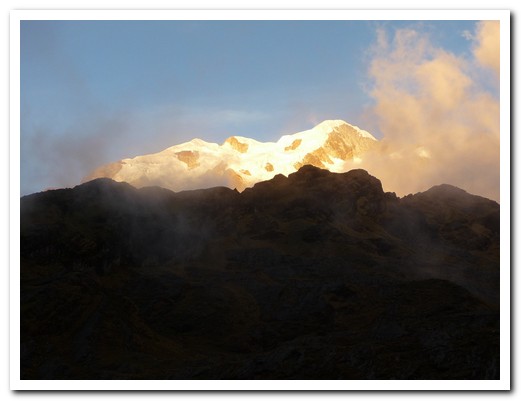
The mountains behind Lake Chillata
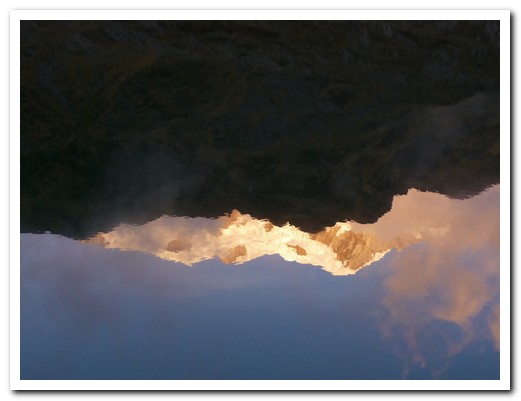
Reflection of the mountains in the lake
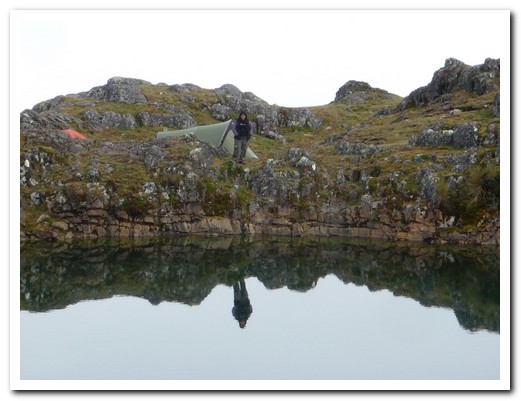
Syrle guards our tent while we trek

Glaciers from 4800 metres

Lake Titicaca from 4800 metres

Strange hairy plant growing above the tree line

Slow going

Ivan takes a rest

Syrle cooks us delicious meals on one burner

Dawn at 4200 metres, the valley below filled with cloud

High altitude instructions

Beautiful high altitude flowers

Morning dew on the flowers

Heading back down

Leaving behind the Illampu mountains